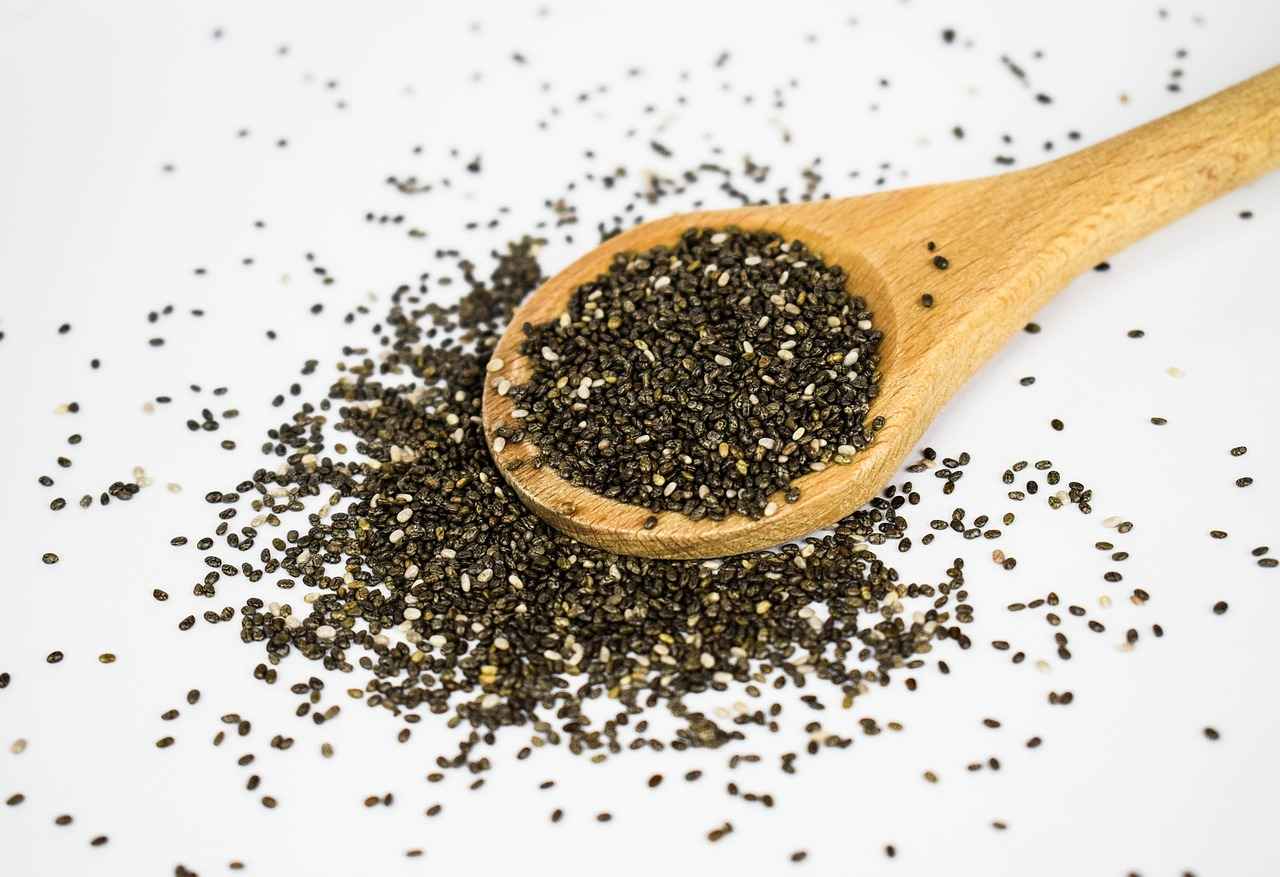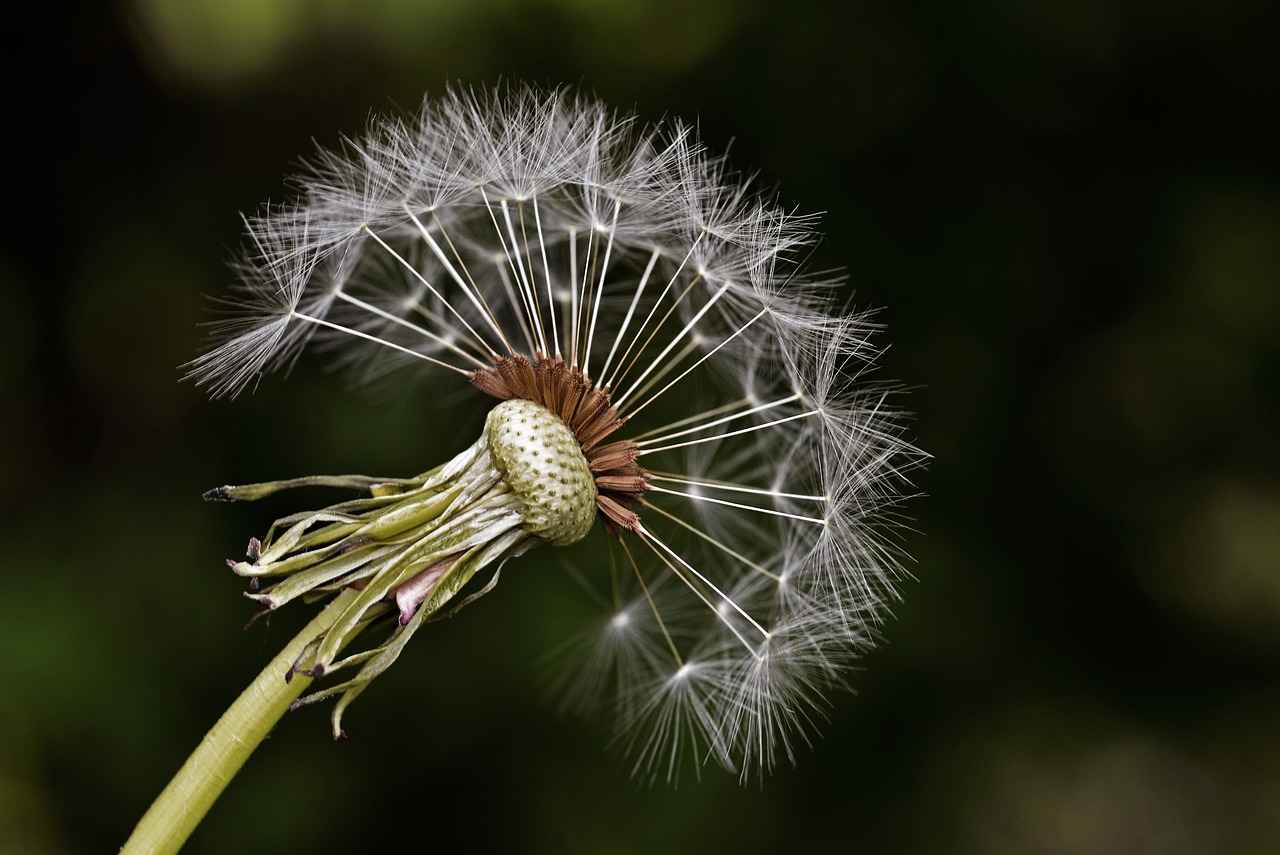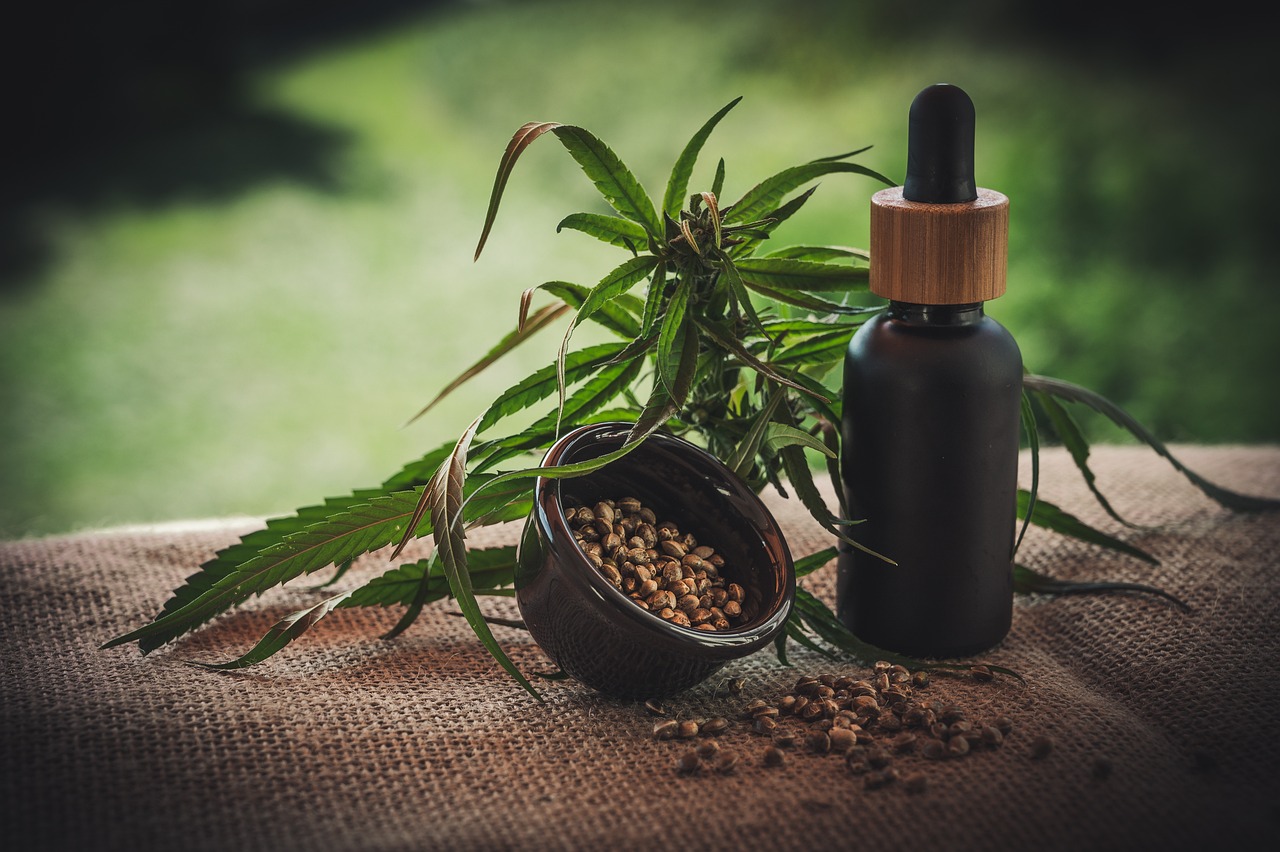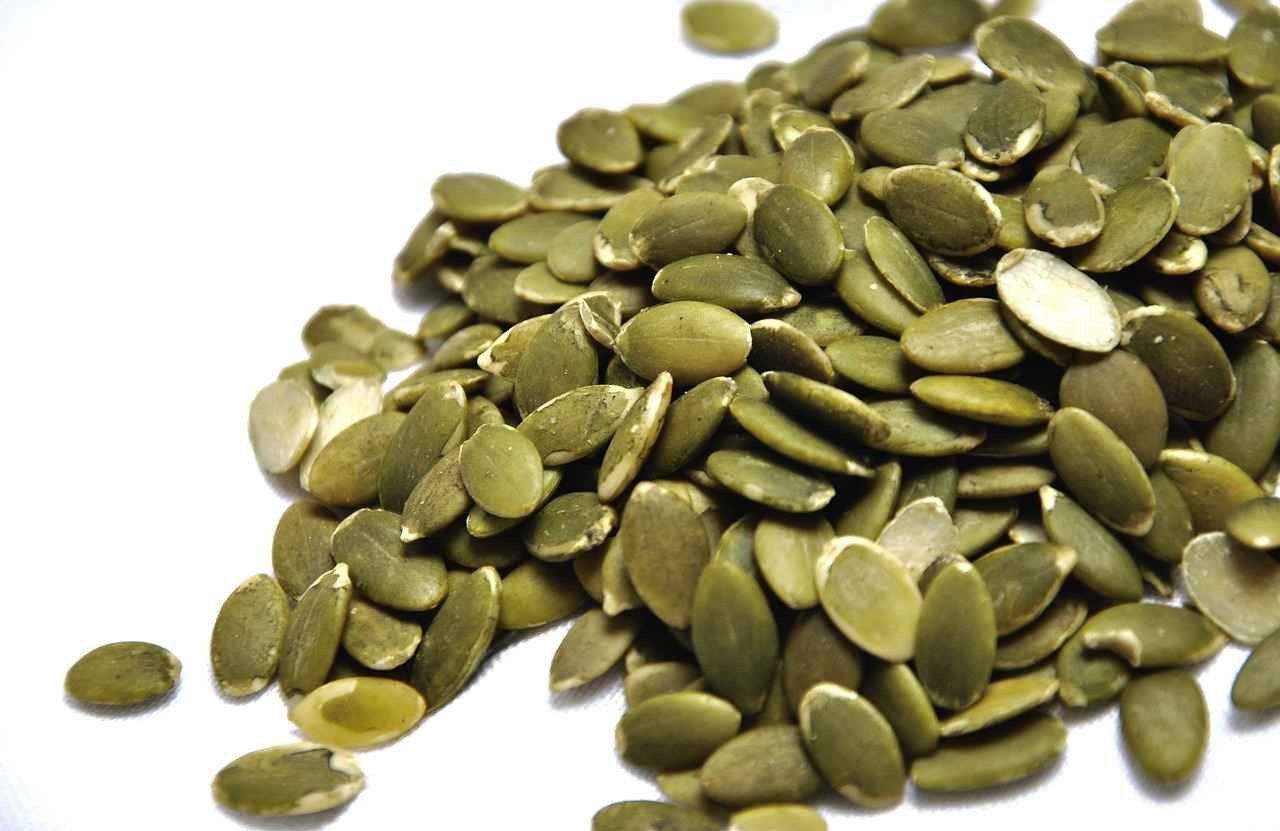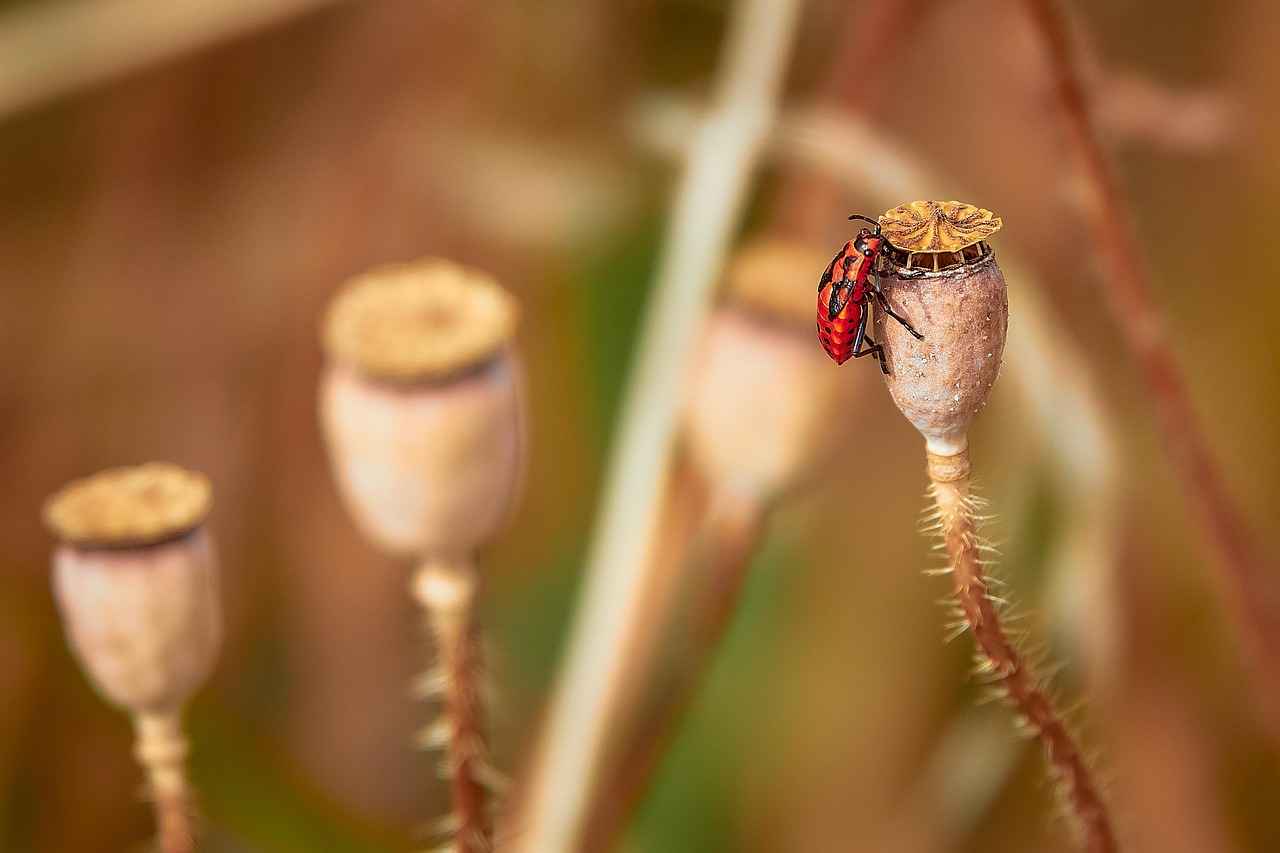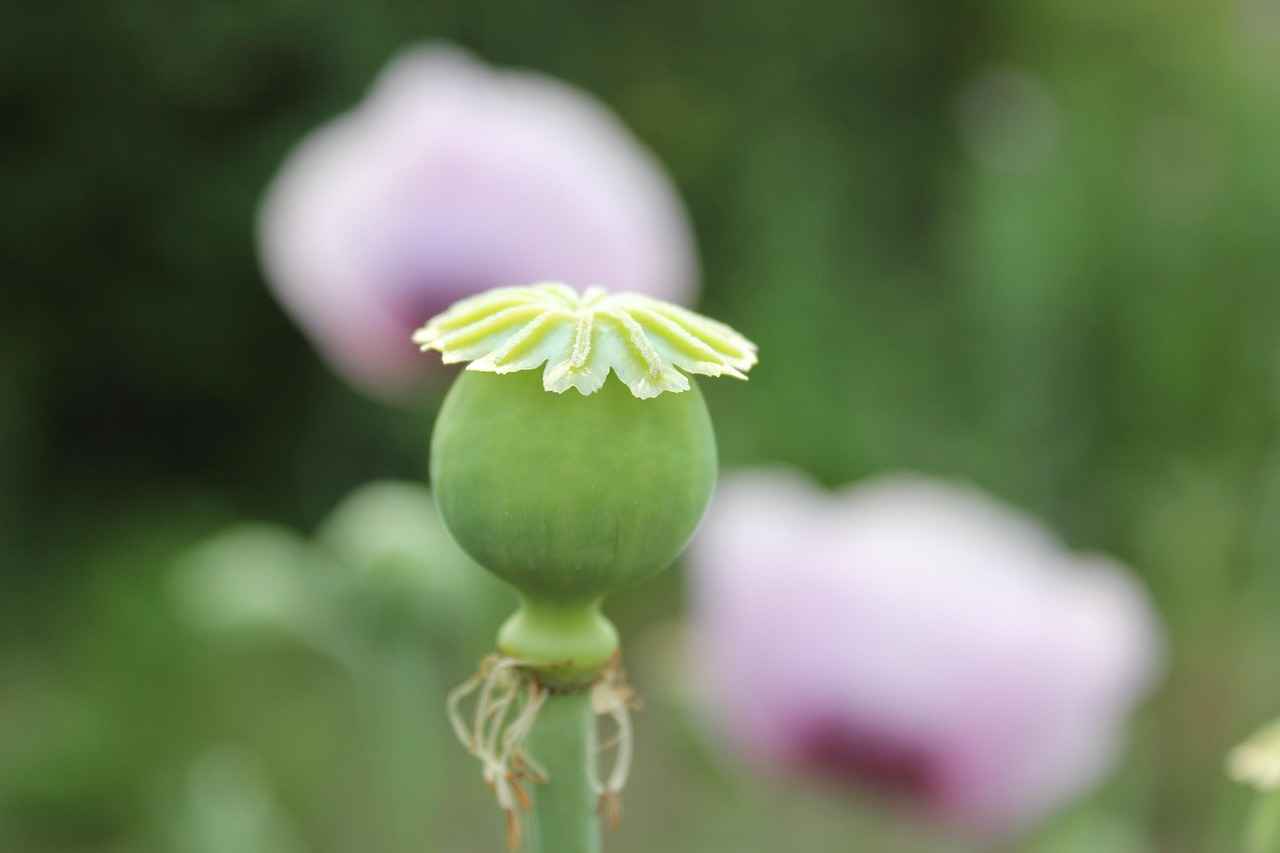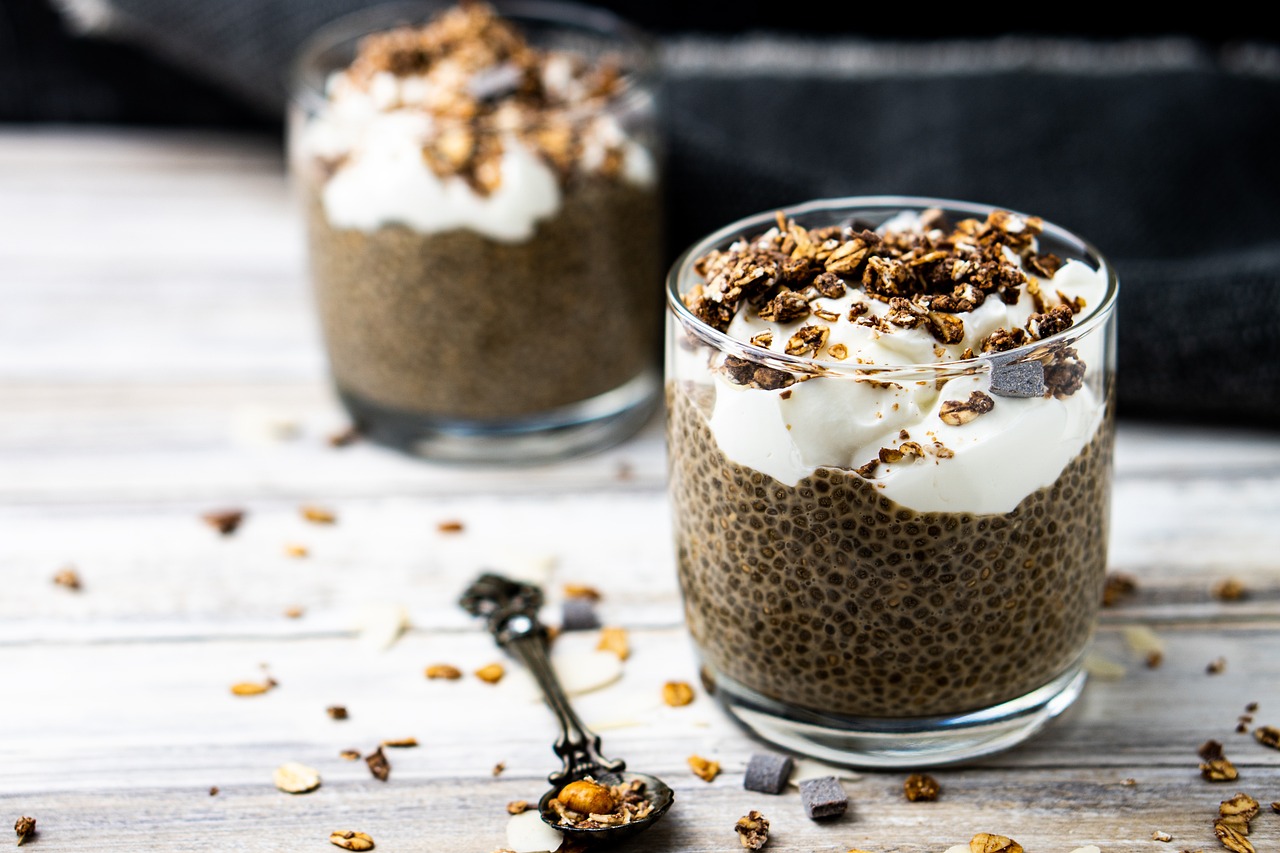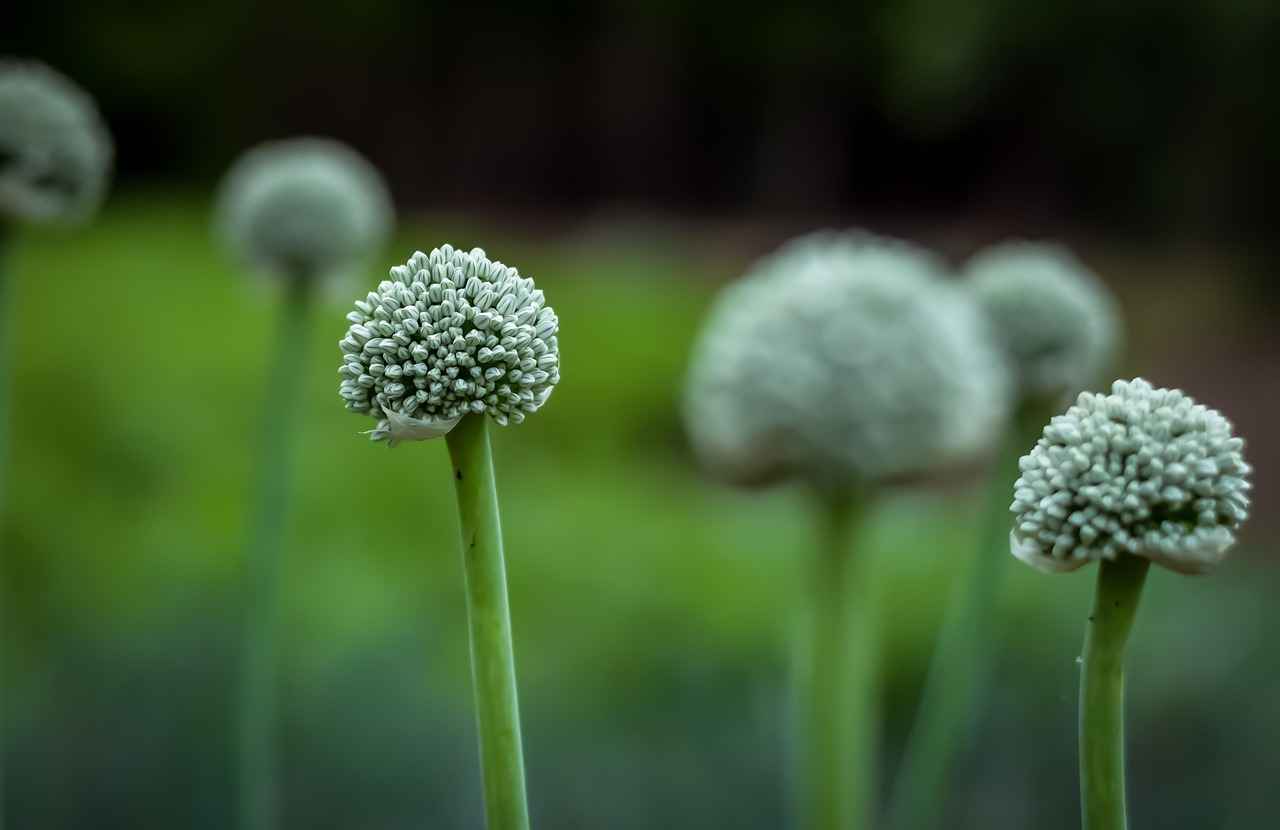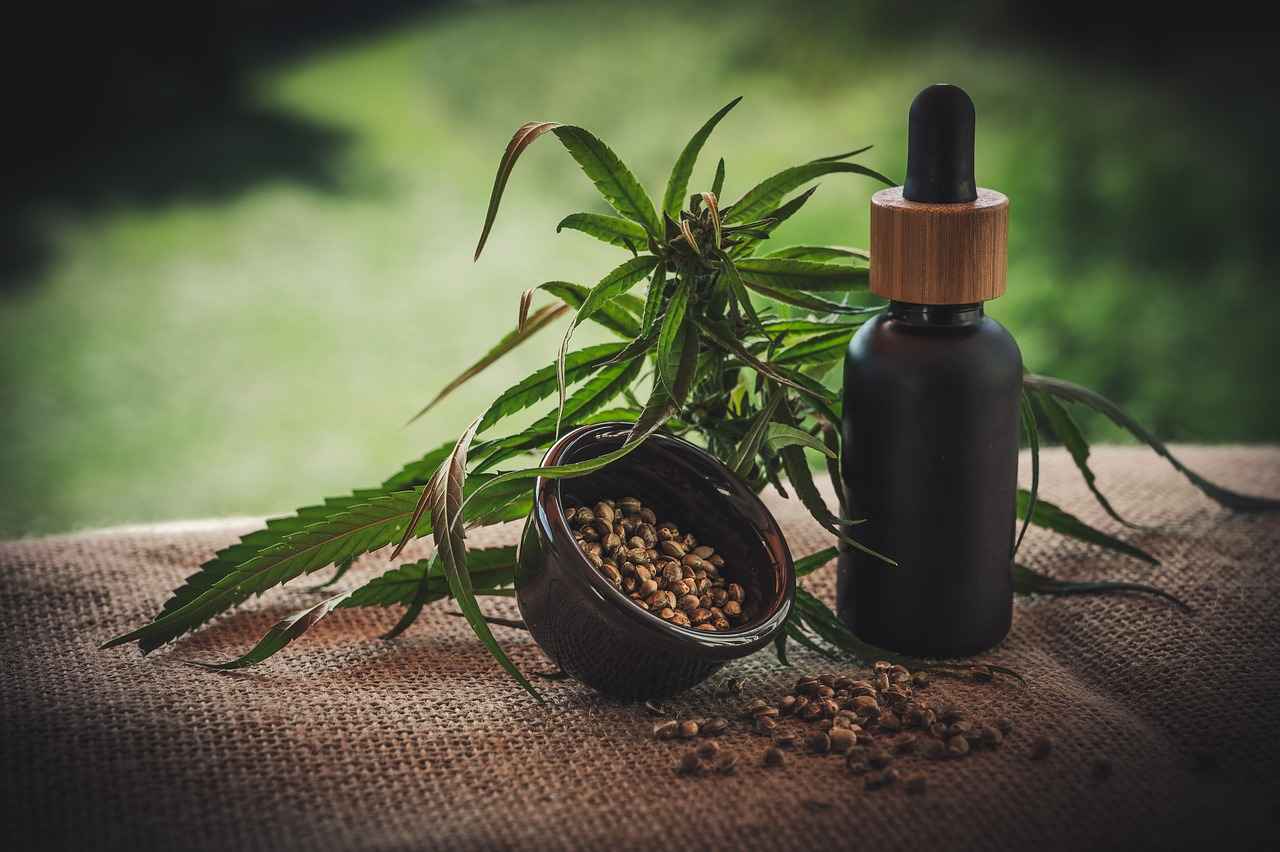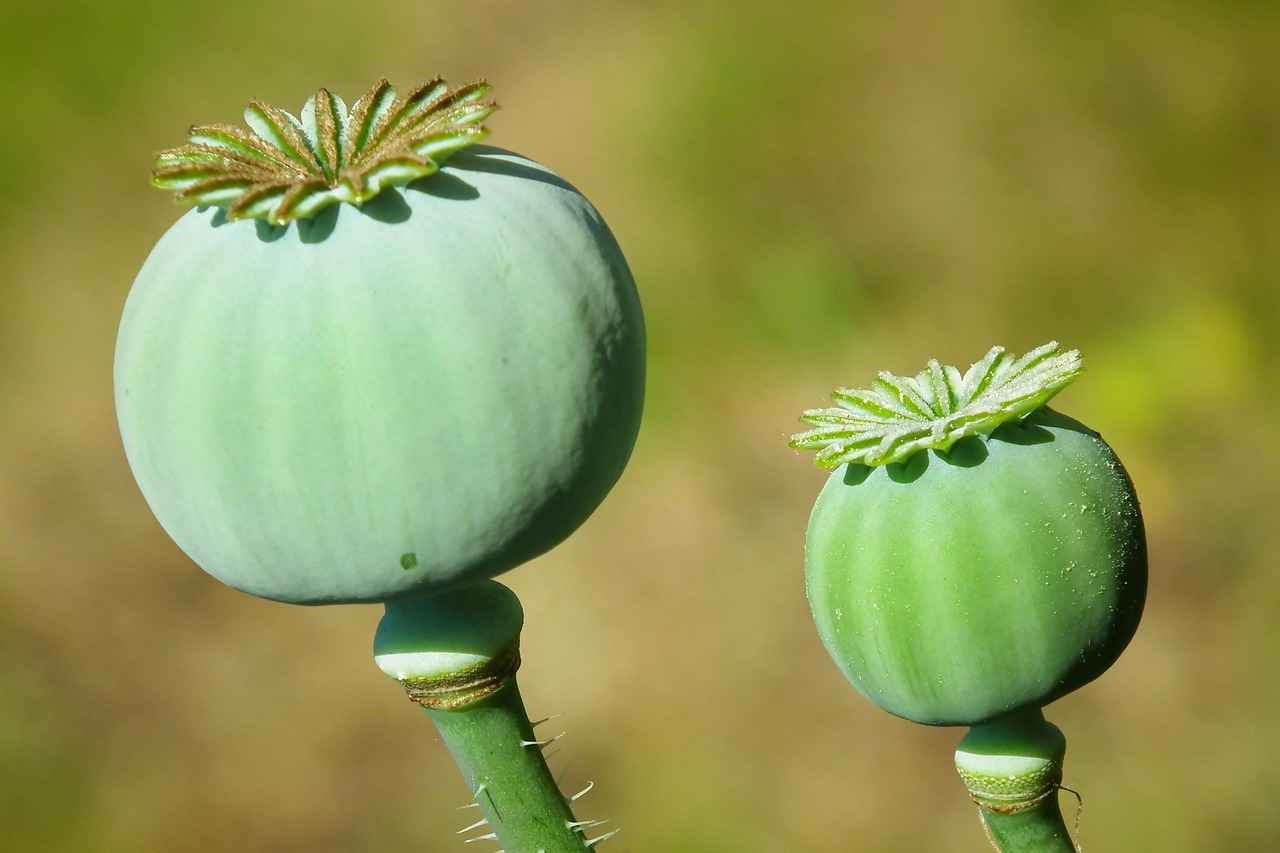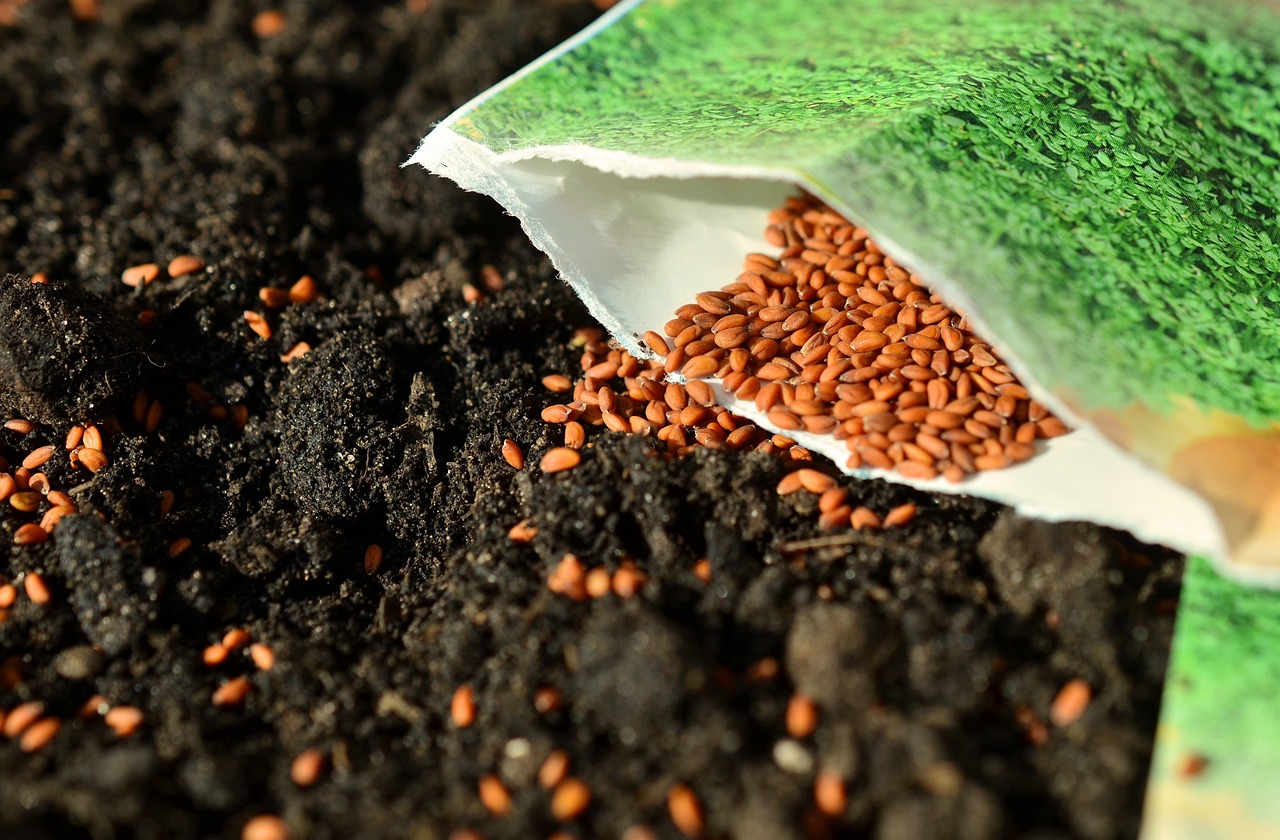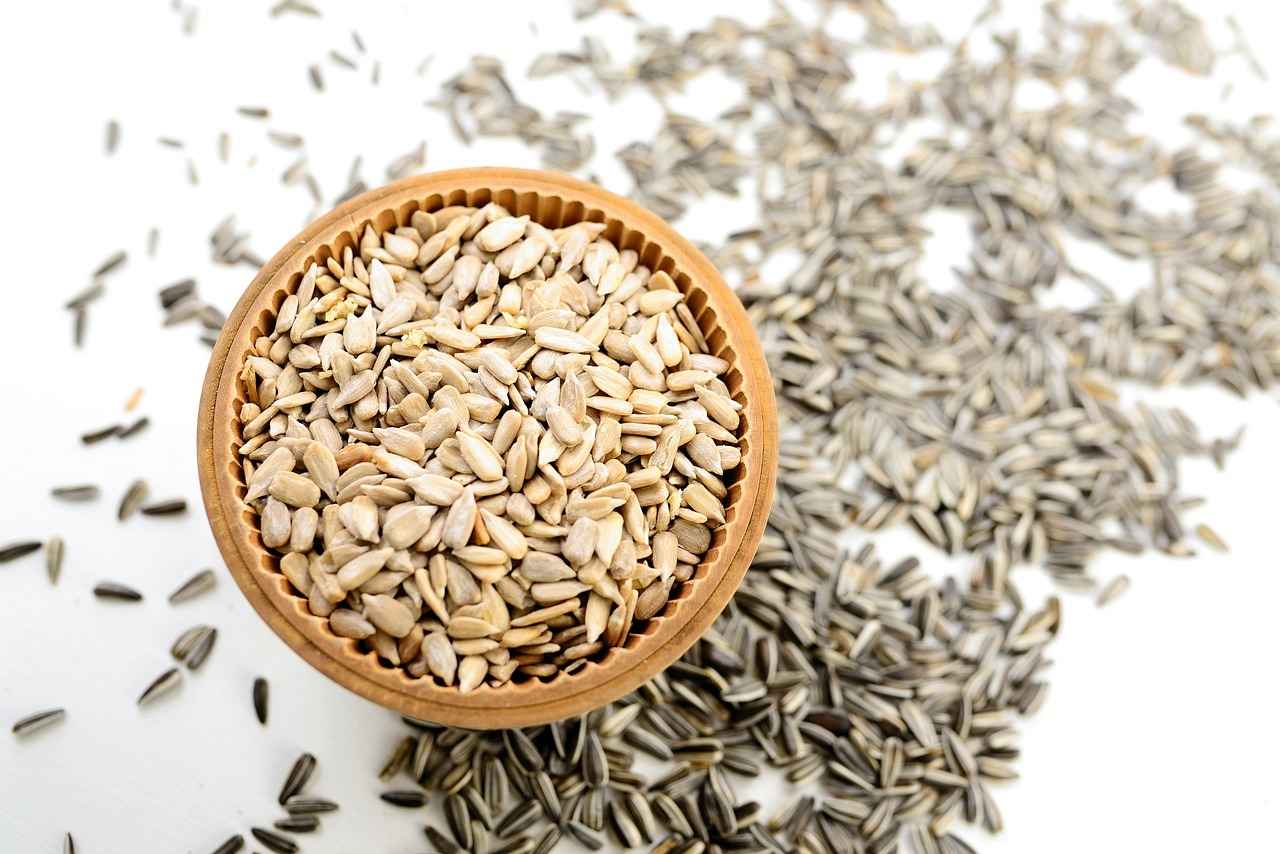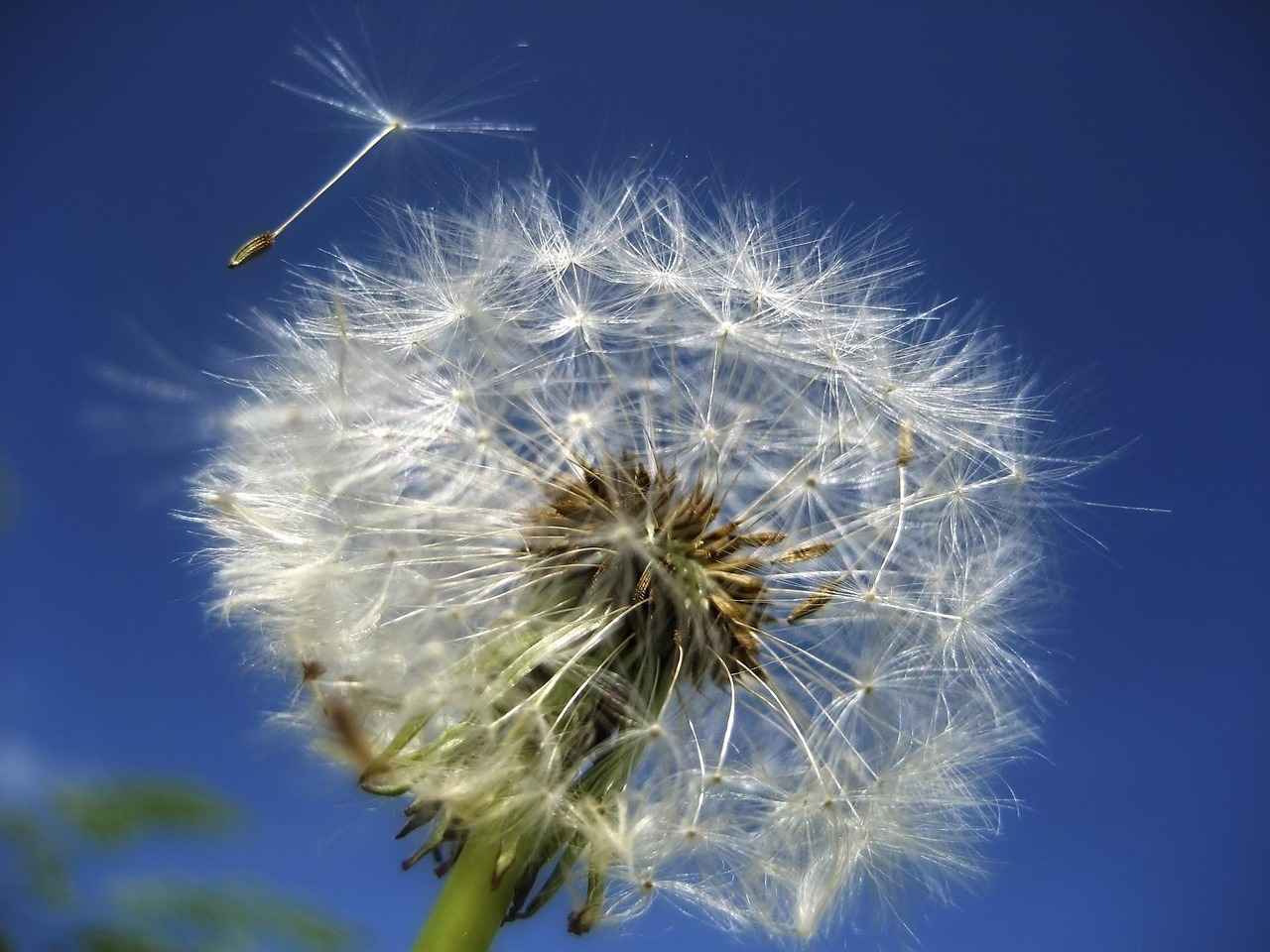Are you looking for a quick and nutritious snack or breakfast option? Chia seed pudding is an excellent choice that is not only easy to prepare but also packed with health benefits. In this article, we will explore the benefits, variations, and essential tips for perfecting this delicious treat.
What Are Chia Seeds?
Chia seeds are tiny, nutrient-dense seeds that have gained immense popularity in the health food community. They are rich in fiber, protein, and omega-3 fatty acids, making them a powerhouse of nutrition. Their ability to absorb liquid and form a gel-like consistency makes them perfect for creating puddings.
Why Choose Chia Seed Pudding?
Chia seed pudding stands out as a fantastic option for a healthy snack or breakfast. It is incredibly versatile and can be made in advance, allowing you to save time during busy mornings. With a variety of flavor options, it can cater to different taste preferences.
Basic Chia Seed Pudding Recipe
To create a basic chia seed pudding, follow these simple steps:
- Combine 3 tablespoons of chia seeds with 1 cup of milk (dairy or plant-based).
- Add a sweetener of your choice, such as honey or maple syrup.
- Mix well and let it sit for at least 2 hours or overnight.
Flavoring Your Chia Seed Pudding
Enhancing the flavor of your chia seed pudding can elevate your experience. Here are some ideas:
- Using Fresh Fruits: Incorporate fruits like berries, bananas, or mangoes for natural sweetness and added nutrients.
- Exploring Flavor Extracts: Add a few drops of vanilla, almond, or coconut extract for a delightful twist.
Common Mistakes to Avoid
To ensure your chia seed pudding turns out perfectly, avoid these common mistakes:
- Getting the Liquid Ratio Right: The ideal liquid-to-chia seed ratio is crucial. Too much liquid can lead to a runny texture.
- Allowing Enough Soaking Time: Insufficient soaking time can result in a gritty texture. Aim for at least 2 hours.
Storage Tips for Chia Seed Pudding
To enjoy your chia seed pudding throughout the week, proper storage is key:
- Refrigeration Guidelines: Store in an airtight container in the refrigerator for up to 5 days.
- Freezing Options: For larger batches, you can freeze the pudding, but be aware that the texture may change upon thawing.
Health Benefits of Chia Seed Pudding
Chia seed pudding not only satisfies your taste buds but also offers numerous health benefits:
- High Fiber Content: The fiber in chia seeds aids digestion and promotes a feeling of fullness, which can assist in weight management.
- Rich in Omega-3 Fatty Acids: Chia seeds are one of the best plant-based sources of omega-3s, essential for heart health and brain function.
By following these guidelines and tips, you can easily prepare delicious chia seed pudding that is both nutritious and satisfying. Enjoy experimenting with flavors and variations to make this healthy treat your own!
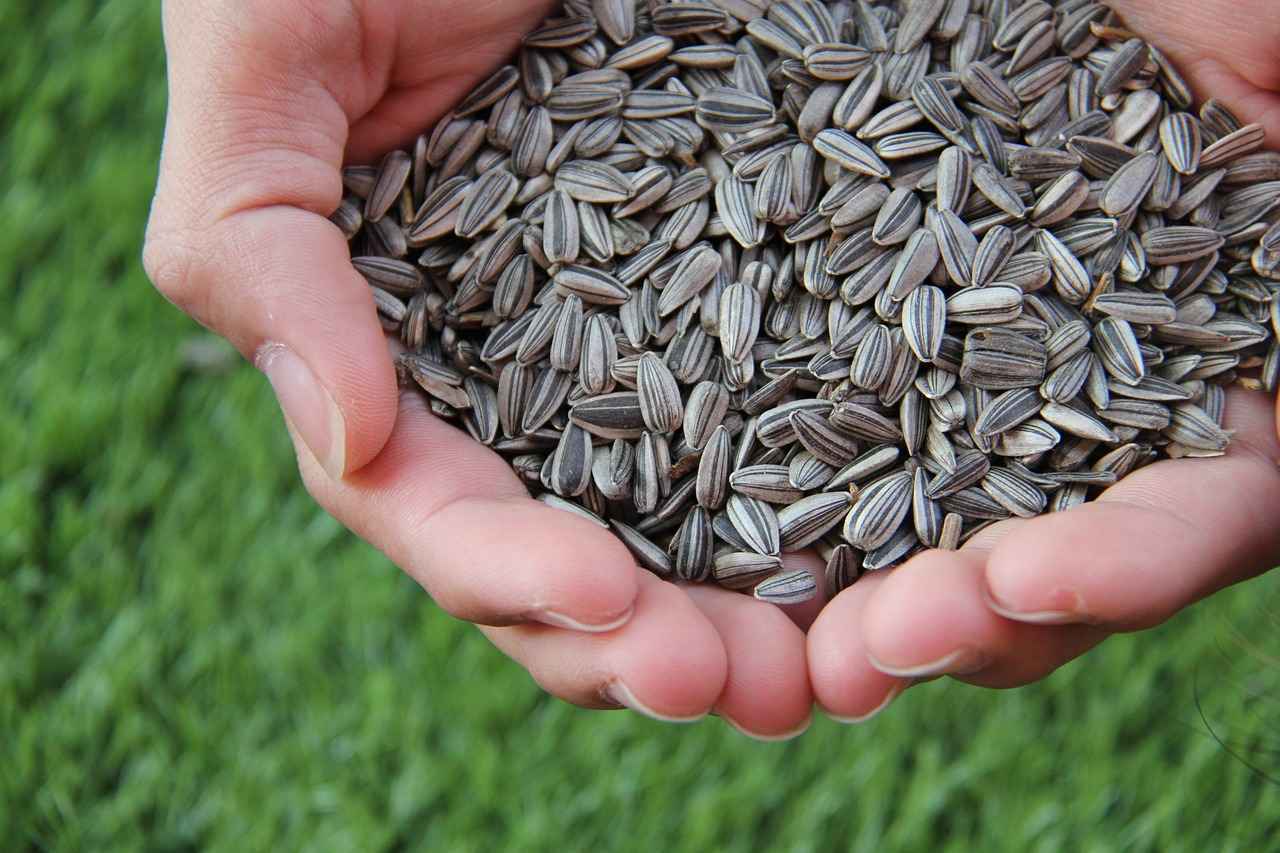
What Are Chia Seeds?
Chia seeds, scientifically known as Salvia hispanica, are small, oval-shaped seeds that come from the flowering plant in the mint family. These tiny seeds have gained significant attention in the health and wellness community due to their impressive nutritional profile. Packed with fiber, protein, and omega-3 fatty acids, chia seeds are a powerhouse of nutrients that can contribute to a balanced diet.
Chia seeds are often hailed as a superfood because of their high nutrient density. Just a 28-gram (1-ounce) serving contains:
- 11 grams of fiber
- 4 grams of protein
- 5 grams of omega-3 fatty acids
- Calcium, magnesium, and phosphorus
This combination of nutrients not only supports overall health but also contributes to various bodily functions. For instance, the fiber content aids in digestion and promotes a feeling of fullness, which can be beneficial for weight management.
Incorporating chia seeds into your diet can offer numerous health benefits:
- Heart Health: The omega-3 fatty acids found in chia seeds are known to support cardiovascular health by reducing inflammation and lowering blood pressure.
- Bone Strength: Chia seeds are rich in calcium and phosphorus, which are essential for maintaining strong bones.
- Blood Sugar Control: The high fiber content can help stabilize blood sugar levels, making chia seeds a smart choice for those managing diabetes.
One of the appealing aspects of chia seeds is their versatility. They can be easily incorporated into various meals and snacks. Here are some popular ways to use chia seeds:
- Add them to smoothies for an extra nutrient boost.
- Mix them into yogurt or oatmeal for added texture and nutrition.
- Use them as a thickening agent in sauces or soups.
- Prepare chia seed pudding by soaking them in milk or a dairy-free alternative.
While chia seeds are generally safe for most people, there are a few considerations to keep in mind:
- Hydration: Chia seeds absorb a significant amount of water, so it’s essential to consume them with adequate liquid to prevent any digestive discomfort.
- Allergies: Although rare, some individuals may have an allergy to chia seeds. It’s advisable to introduce them gradually into your diet.
In summary, chia seeds are a nutrient-dense food that can enhance your overall diet. Their health benefits, versatility in recipes, and ease of incorporation into meals make them a fantastic addition to a balanced lifestyle. Whether you choose to sprinkle them on your morning oatmeal or blend them into a smoothie, chia seeds can provide a host of health advantages.
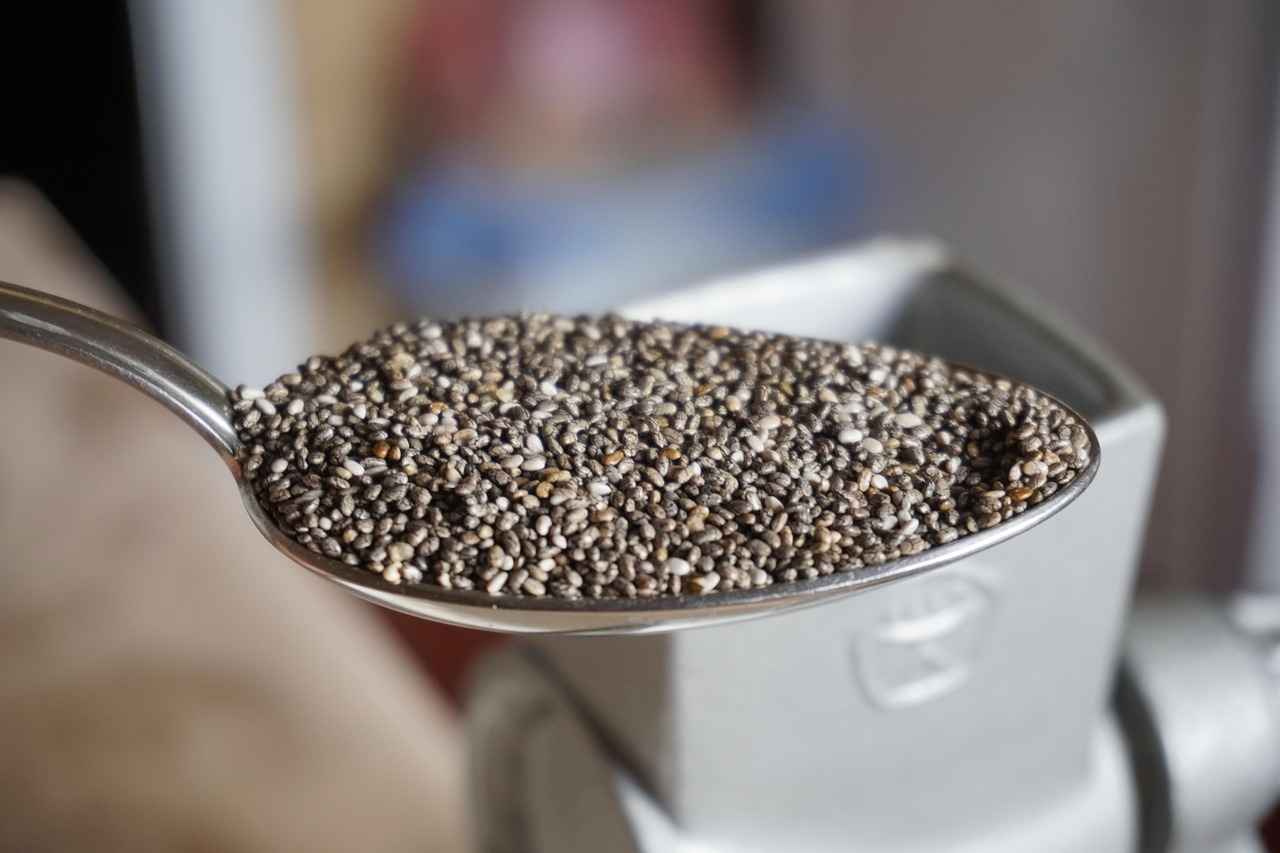
Why Choose Chia Seed Pudding?
Chia seed pudding is becoming increasingly popular among health enthusiasts and busy individuals alike. Why is this dish garnering so much attention? The answer lies in its numerous benefits, ease of preparation, and versatility. In this section, we will explore why chia seed pudding is an excellent choice for a healthy snack or breakfast.
Chia seeds are incredibly nutrient-dense. They are packed with essential nutrients such as fiber, protein, and omega-3 fatty acids. When soaked in liquid, these tiny seeds expand and form a gel-like consistency, creating a filling and satisfying pudding. This makes chia seed pudding an ideal option for those looking to maintain a healthy diet.
One of the most significant advantages of chia seed pudding is its simplicity. The basic recipe requires only a few ingredients, making it accessible for anyone, regardless of culinary skills. You can whip it up in just a few minutes:
- Combine: Mix chia seeds with your choice of milk and a sweetener.
- Soak: Let the mixture sit for at least 2 hours or overnight.
- Enjoy: Stir and serve, adding fruits or toppings as desired.
Absolutely! One of the most appealing aspects of chia seed pudding is its customizability. You can easily modify the recipe to suit your taste preferences and dietary needs. Here are some popular variations:
- Flavorings: Add vanilla extract, cocoa powder, or spices like cinnamon for added flavor.
- Toppings: Enhance your pudding with fresh fruits, nuts, or granola.
- Milk Alternatives: Use almond, coconut, or oat milk for a dairy-free option.
Yes! Chia seed pudding is perfect for meal prep. You can make several servings at once and store them in the refrigerator for up to five days. This makes it a convenient option for busy mornings or healthy snacks throughout the week. Just grab a jar, and you’re good to go!
Chia seed pudding not only satisfies your taste buds but also offers numerous health benefits:
- High Fiber Content: The fiber in chia seeds aids digestion and promotes a feeling of fullness, helping with weight management.
- Rich in Omega-3 Fatty Acids: These essential fats support heart health and brain function.
- Protein Source: Chia seeds provide a plant-based protein source, making them a great addition to vegetarian and vegan diets.
While making chia seed pudding is straightforward, there are some common pitfalls to watch out for:
- Incorrect Liquid Ratio: Using too much or too little liquid can affect the texture. A good starting ratio is 3 tablespoons of chia seeds to 1 cup of liquid.
- Insufficient Soaking Time: Allowing enough time for the seeds to absorb the liquid is crucial. Aim for at least 2 hours, but overnight is ideal for the best consistency.
In summary, chia seed pudding is not only a delicious and versatile dish but also a powerhouse of nutrition. Its ease of preparation, customizability, and health benefits make it a top choice for anyone looking to enhance their diet. Whether enjoyed as a breakfast, snack, or dessert, chia seed pudding is sure to please!
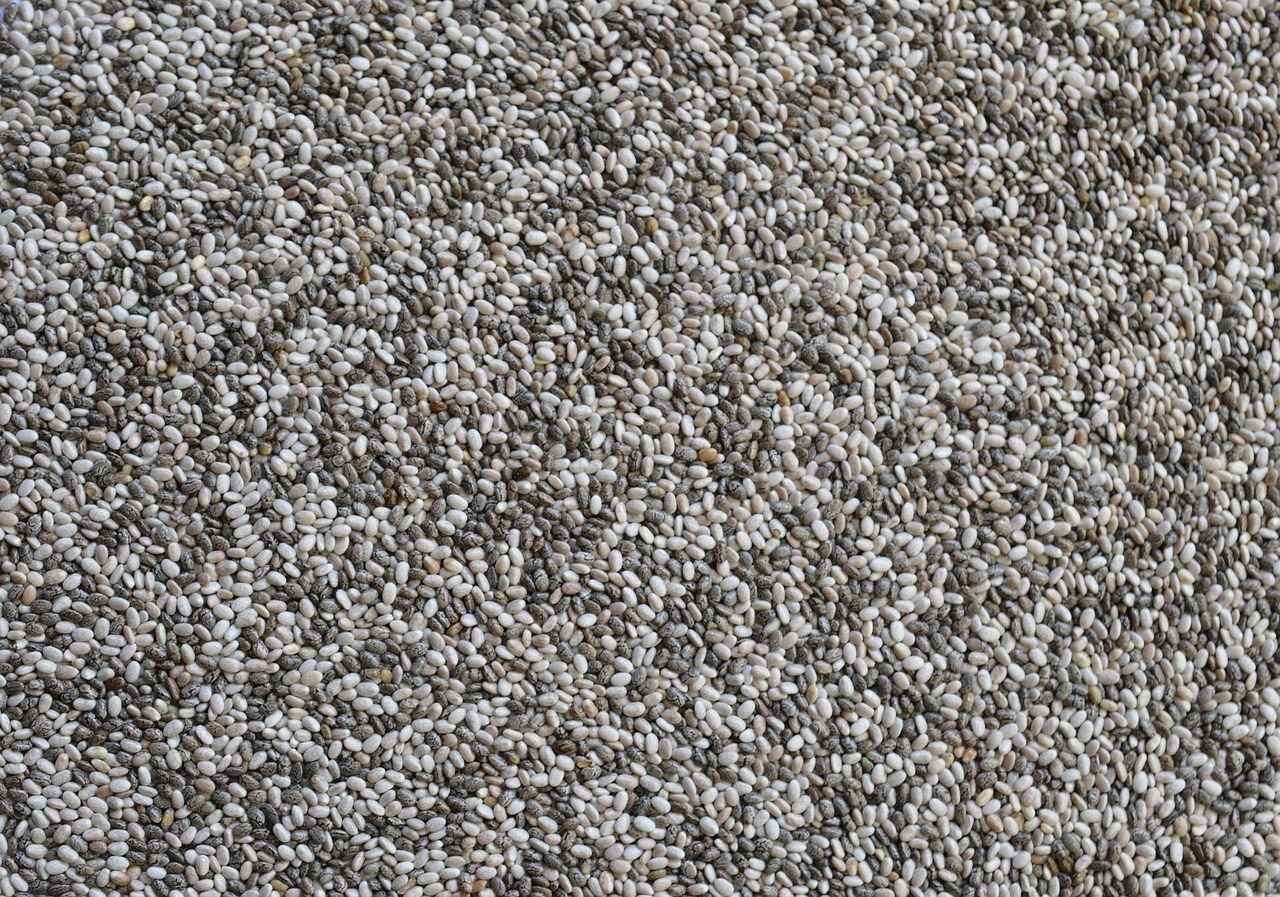
Basic Chia Seed Pudding Recipe
Chia seed pudding is a delightful and nutritious treat that can be prepared in just a few minutes. This simple recipe allows you to indulge in a creamy and satisfying snack or breakfast that is both healthy and versatile. To make a basic chia seed pudding, you will need to follow a few straightforward steps that ensure the best texture and flavor.
- Ingredients:
- 1/4 cup chia seeds
- 1 cup milk (dairy or plant-based)
- 1-2 tablespoons sweetener (honey, maple syrup, or agave)
- Optional: vanilla extract, cocoa powder, or fruit for flavor
To begin, combine the chia seeds, milk, and sweetener in a mixing bowl or a jar. Stir the mixture well to ensure that the chia seeds are evenly distributed throughout the liquid. It is essential to break up any clumps that may form, as this will help achieve a smoother texture.
Once the ingredients are combined, cover the bowl or seal the jar with a lid. Allow the mixture to sit for at least 2 hours, or preferably, overnight in the refrigerator. This soaking time is crucial as it allows the chia seeds to absorb the liquid and expand, creating a pudding-like consistency.
After the soaking period, check the pudding’s texture. If it appears too thick, you can add a little more milk to reach your desired consistency. Stir the mixture again to incorporate any additional liquid. For added flavor, consider mixing in some vanilla extract, cocoa powder, or even a sprinkle of cinnamon.
When you’re ready to serve, you can enjoy the chia seed pudding as is or top it with your favorite fruits, nuts, or granola. Fresh berries, sliced bananas, or diced mangoes can add a burst of flavor and additional nutrients, making your pudding even more enjoyable.
Chia seed pudding is not just easy to make; it’s also a fantastic way to incorporate healthy ingredients into your diet. The nutritional benefits of chia seeds include high fiber content, omega-3 fatty acids, and protein, making it a well-rounded option for any meal of the day.
In summary, making a basic chia seed pudding is a quick and rewarding process. By combining chia seeds, milk, and sweetener, and allowing the mixture to soak, you can create a delicious and nutritious dish that can be customized to your taste. Whether you enjoy it for breakfast or as a snack, chia seed pudding is a fantastic addition to your healthy eating repertoire.
Ingredients Needed for the Recipe
When it comes to creating a delightful chia seed pudding, gathering the right ingredients is essential for achieving the perfect texture and flavor. Understanding the role of each component not only enhances your final dish but also ensures that it meets your dietary preferences and taste buds. Below, we explore the crucial ingredients needed for this nutritious treat.
- Chia Seeds: These tiny seeds are the star of the show. Rich in fiber, protein, and omega-3 fatty acids, chia seeds absorb liquid and expand, creating a pudding-like consistency. Aim for about 3 tablespoons for a single serving.
- Milk: The choice of milk can significantly affect the taste and creaminess of your pudding. You can use any type of milk, including:
- Almond Milk – A low-calorie, nutty option.
- Coconut Milk – Adds a tropical flavor and creaminess.
- Oat Milk – A great choice for a creamy texture.
- Dairy Milk – For a traditional approach with added protein.
- Sweetener: To enhance the flavor, adding a sweetener is often necessary. Popular options include:
- Honey – A natural sweetener that adds a distinct flavor.
- Maple Syrup – Offers a rich, caramel-like sweetness.
- Agave Nectar – A vegan-friendly option that dissolves easily.
- Stevia – A zero-calorie sweetener for those looking to reduce sugar intake.
- Optional Flavorings: To elevate your chia seed pudding, consider adding various flavorings such as:
- Vanilla Extract – A classic addition that enhances sweetness.
- Cocoa Powder – For a chocolatey twist.
- Spices – Cinnamon or nutmeg can add warmth and depth.
- Fresh Fruits – Berries, bananas, or mangoes not only add flavor but also increase the nutritional value.
Each ingredient plays a vital role in the overall success of your chia seed pudding. The chia seeds provide the unique texture and nutritional benefits, while the milk determines the creaminess and flavor profile. The chosen sweetener balances the natural earthiness of chia seeds, making the pudding more palatable. Finally, the optional flavorings allow for endless customization, catering to personal preferences and dietary needs.
To achieve the best results, combine the chia seeds with your chosen milk in a bowl or jar. Stir well to prevent clumping, then add your sweetener and any flavorings. Allow the mixture to sit for a few minutes, then stir again to ensure even distribution. Cover and refrigerate for at least two hours, or preferably overnight, to allow the chia seeds to absorb the liquid and expand.
By carefully selecting and combining these ingredients, you can create a delicious and nutritious chia seed pudding that suits your taste and dietary requirements. Enjoy experimenting with different flavors and textures to find your perfect recipe!
Step-by-Step Preparation Guide
Making chia seed pudding is a simple yet rewarding process. This will walk you through the essential stages to create a delicious and nutritious pudding that can be enjoyed at any time of the day.
Before you start, it’s important to have all your ingredients ready. You will need:
- Chia seeds – the star ingredient, rich in nutrients.
- Milk – choose from dairy or plant-based options like almond, coconut, or oat milk.
- Sweetener – options include honey, maple syrup, or agave nectar.
- Flavorings – consider vanilla extract, cocoa powder, or spices like cinnamon for added taste.
In a medium-sized bowl or jar, combine the following:
- 1/4 cup chia seeds
- 1 cup milk
- 2 tablespoons sweetener (adjust to taste)
- Optional flavorings (1 teaspoon vanilla or a sprinkle of cinnamon)
Use a whisk or a spoon to thoroughly mix the ingredients together. Ensure that the chia seeds are evenly distributed and not clumped together.
Once your mixture is well combined, it’s time to let it soak. Cover the bowl or jar with a lid or plastic wrap and place it in the refrigerator. The soaking time is crucial for the seeds to absorb the liquid and expand, creating a creamy texture. Aim for:
- At least 2 hours for a quick soak.
- Overnight for the best results.
After the soaking period, take the pudding out of the refrigerator. You may notice that the mixture has thickened. Give it a good stir to break up any clumps and achieve your desired consistency. If it’s too thick for your liking, you can add a splash more milk to loosen it up.
The beauty of chia seed pudding lies in its versatility. Once you’ve mastered the basic recipe, you can customize it to suit your taste. Consider:
- Adding fresh fruits like berries, bananas, or mango for natural sweetness.
- Incorporating nuts or seeds for added crunch and nutrition.
- Drizzling with honey or maple syrup before serving for an extra touch of sweetness.
Chia seed pudding can be served in various ways. Try it:
- In a bowl topped with your favorite fruits and nuts.
- In a jar as a grab-and-go breakfast option.
- Layered with yogurt for a delightful parfait.
With these simple steps, you can create a delicious chia seed pudding that is not only healthy but also satisfying. Enjoy experimenting with different flavors and toppings to make it your own!
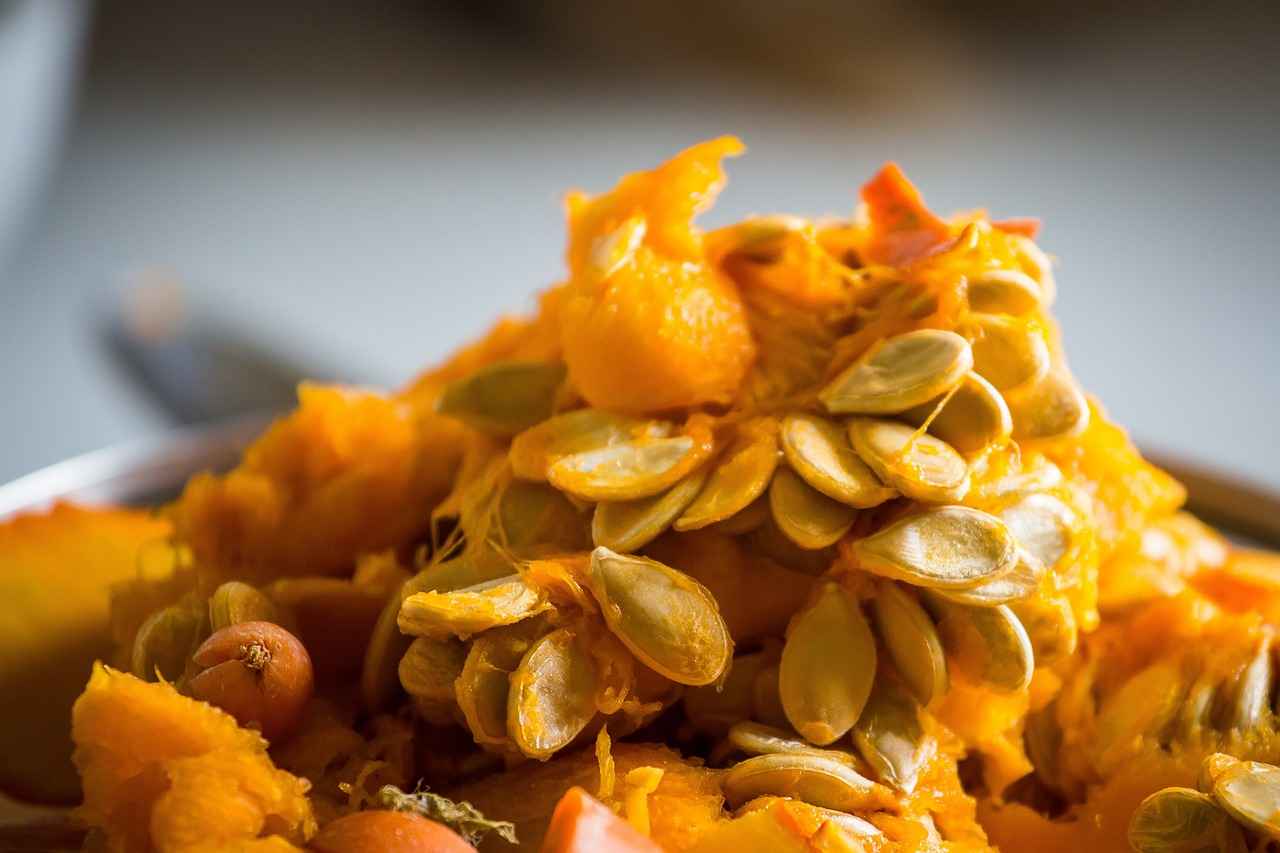
Flavoring Your Chia Seed Pudding
Flavoring your chia seed pudding can significantly enhance its taste and make it a delightful treat. By incorporating various ingredients, you can create a unique flavor profile that suits your palate. This section will explore different methods to elevate your chia seed pudding, focusing on fruits, spices, and extracts.
Flavoring is essential when it comes to chia seed pudding, as it transforms a simple dish into a culinary experience. The bland taste of chia seeds can be easily complemented by a variety of ingredients, allowing you to customize each serving to your liking. Whether you prefer sweet, savory, or spicy, there are countless ways to enhance your pudding.
Incorporating fresh fruits is one of the easiest ways to add flavor and nutrition to your chia seed pudding. Consider the following:
- Berries: Strawberries, blueberries, and raspberries provide natural sweetness and antioxidants.
- Bananas: Mashed bananas can add creaminess and a rich flavor.
- Mango: Diced mango brings a tropical flair and vibrant color.
Feel free to mix and match fruits for a colorful and nutritious topping. You can also layer fruits at the bottom of the jar before adding the pudding for a visually appealing presentation.
Flavor extracts can be a game-changer for your pudding. Adding just a few drops can create a whole new taste experience:
- Vanilla Extract: A classic choice that adds warmth and richness.
- Almond Extract: Provides a nutty flavor that pairs beautifully with fruits.
- Coconut Extract: Brings a tropical essence that complements many ingredients.
When using extracts, remember that a little goes a long way. Start with a small amount and adjust according to your taste preferences.
Adding spices can elevate the flavor of your chia seed pudding to new heights:
- Cinnamon: Offers a warm, comforting flavor that pairs well with many fruits.
- Nutmeg: Adds a hint of sweetness and warmth, perfect for fall-inspired recipes.
- Cardamom: Provides an exotic touch that can make your pudding stand out.
Sprinkle spices directly into the pudding mixture before soaking, allowing the flavors to meld beautifully.
Don’t hesitate to experiment with different combinations. Here are a few ideas:
- Chocolate Banana: Add cocoa powder and mashed banana for a decadent treat.
- Tropical Delight: Mix coconut milk, diced mango, and a hint of lime for a refreshing flavor.
- Spiced Apple: Combine diced apples, cinnamon, and a touch of maple syrup for a cozy dessert.
Mixing and matching flavors will not only keep your chia seed pudding exciting but also allow you to discover new favorites.
Finally, the way you present your chia seed pudding can enhance the overall experience. Consider layering your pudding with fruits and nuts in a clear jar to showcase the beautiful colors and textures. Top with a sprinkle of granola or seeds for added crunch.
Flavoring your chia seed pudding is an enjoyable way to personalize this healthy dish. By using fresh fruits, spices, and extracts, you can create a variety of delicious combinations that will keep you coming back for more. Don’t be afraid to get creative and experiment with different flavors to find your perfect blend!
Using Fresh Fruits
When it comes to enhancing the flavor and nutritional profile of your chia seed pudding, is a fantastic option. Fresh fruits not only provide a burst of natural sweetness but also contribute essential vitamins and minerals that can elevate your dish to a new level of healthiness and taste. Let’s explore how incorporating various fruits can transform your chia seed pudding.
Adding fresh fruits to your chia seed pudding can significantly boost its nutritional value. Fruits like berries, bananas, and mangoes are rich in antioxidants, vitamins, and dietary fiber. These nutrients can enhance your overall health while making your pudding more enjoyable. Additionally, fruits offer a range of flavors and textures that can make each serving unique.
- Berries: Strawberries, blueberries, and raspberries are excellent choices. They are low in calories and high in antioxidants, making them perfect for a healthy breakfast or snack.
- Bananas: Adding sliced bananas not only provides natural sweetness but also offers potassium, which is essential for heart health.
- Mango: This tropical fruit adds a creamy texture and sweet flavor, along with vitamins A and C, which are beneficial for skin health.
- Peaches and Nectarines: These stone fruits can add a juicy flavor and are a good source of vitamins and fiber.
To incorporate fresh fruits into your chia seed pudding, consider the following methods:
- Layering: After preparing your basic chia seed pudding, layer it with your choice of fresh fruits in a glass. This not only looks appealing but also allows you to enjoy the contrasting textures.
- Blending: For a smoother consistency, blend your fruits with the milk before mixing them with chia seeds. This method creates a fruity base that infuses the pudding with flavor.
- Garnishing: Top your finished pudding with a handful of fresh fruits just before serving. This adds a vibrant touch and makes the dish visually appealing.
When selecting fresh fruits for your chia seed pudding, consider the following tips:
- Seasonality: Choose fruits that are in season for the best flavor and nutritional content.
- Organic Options: Whenever possible, opt for organic fruits to reduce exposure to pesticides.
- Ripeness: Select fruits that are ripe but not overripe to ensure the best taste and texture.
Don’t hesitate to experiment with different fruit combinations. Mixing fruits like berries with bananas or adding a tropical twist with mango and coconut can create exciting flavor profiles. You can also consider adding spices like cinnamon or nutmeg for an extra layer of flavor.
In conclusion, incorporating fresh fruits into your chia seed pudding not only enhances its flavor but also boosts its nutritional benefits. With a wide variety of fruits available, you can easily customize your pudding to suit your taste preferences and health goals. Enjoy the delightful combination of flavors and the health benefits that fresh fruits bring to your chia seed pudding!
Exploring Flavor Extracts
When it comes to enhancing the flavor of your chia seed pudding, flavor extracts offer a simple yet effective way to elevate your dish. These concentrated liquids can transform a basic recipe into a gourmet experience, all while keeping the calorie count low. Let’s delve deeper into how you can use various flavor extracts to create delicious and unique chia seed puddings.
Flavor extracts are concentrated liquids derived from natural sources, such as fruits, nuts, and spices. They capture the essence of the ingredient, providing a powerful burst of flavor in just a few drops. Common examples include vanilla, almond, and coconut extracts, each bringing its own distinctive taste profile to your dishes.
Incorporating flavor extracts into your chia seed pudding allows you to experiment with different tastes without significantly altering the nutritional value. They can add depth and complexity to your pudding, making it more enjoyable and satisfying. Here are a few reasons to consider:
- Low-Calorie Flavor Boost: Unlike syrups or sweeteners, extracts provide flavor without the added calories.
- Versatility: A few drops can transform your pudding into a variety of flavors, from tropical coconut to warm vanilla.
- Easy to Use: Just a small amount is needed to achieve a significant flavor impact, making them convenient for quick preparations.
Here are some popular flavor extracts that can take your chia seed pudding to the next level:
- Vanilla Extract: A classic choice, vanilla adds warmth and sweetness. It pairs well with almost any additional ingredients you choose.
- Almond Extract: With its nutty flavor, almond extract can give your pudding a delightful twist, making it taste indulgent.
- Coconut Extract: Perfect for a tropical flair, coconut extract can transport your taste buds to a sunny beach.
- Mint Extract: For a refreshing taste, mint extract can add a unique twist, especially when combined with chocolate or fruit.
- Maple Extract: For those who love the taste of maple syrup, this extract can provide that sweet, rich flavor without the added sugar.
Using flavor extracts in your chia seed pudding is straightforward. Here’s a simple guide:
1. Start with your basic chia seed pudding recipe.2. Add your choice of milk and sweetener as usual.3. Incorporate 1/2 to 1 teaspoon of your preferred flavor extract.4. Mix well and let it sit to soak.5. Taste and adjust the flavor if necessary, adding more extract as desired.
Don’t hesitate to get creative! Combining different extracts can lead to exciting flavor profiles. For instance, mixing vanilla and almond extracts can create a rich, dessert-like pudding. Or try pairing coconut extract with fresh pineapple for a tropical treat. The possibilities are endless!
Flavor extracts are an excellent way to enhance your chia seed pudding, offering a myriad of options to suit any palate. By experimenting with different extracts and combinations, you can create a personalized pudding that delights your taste buds while remaining nutritious. So grab your chia seeds and start exploring the world of flavor extracts today!
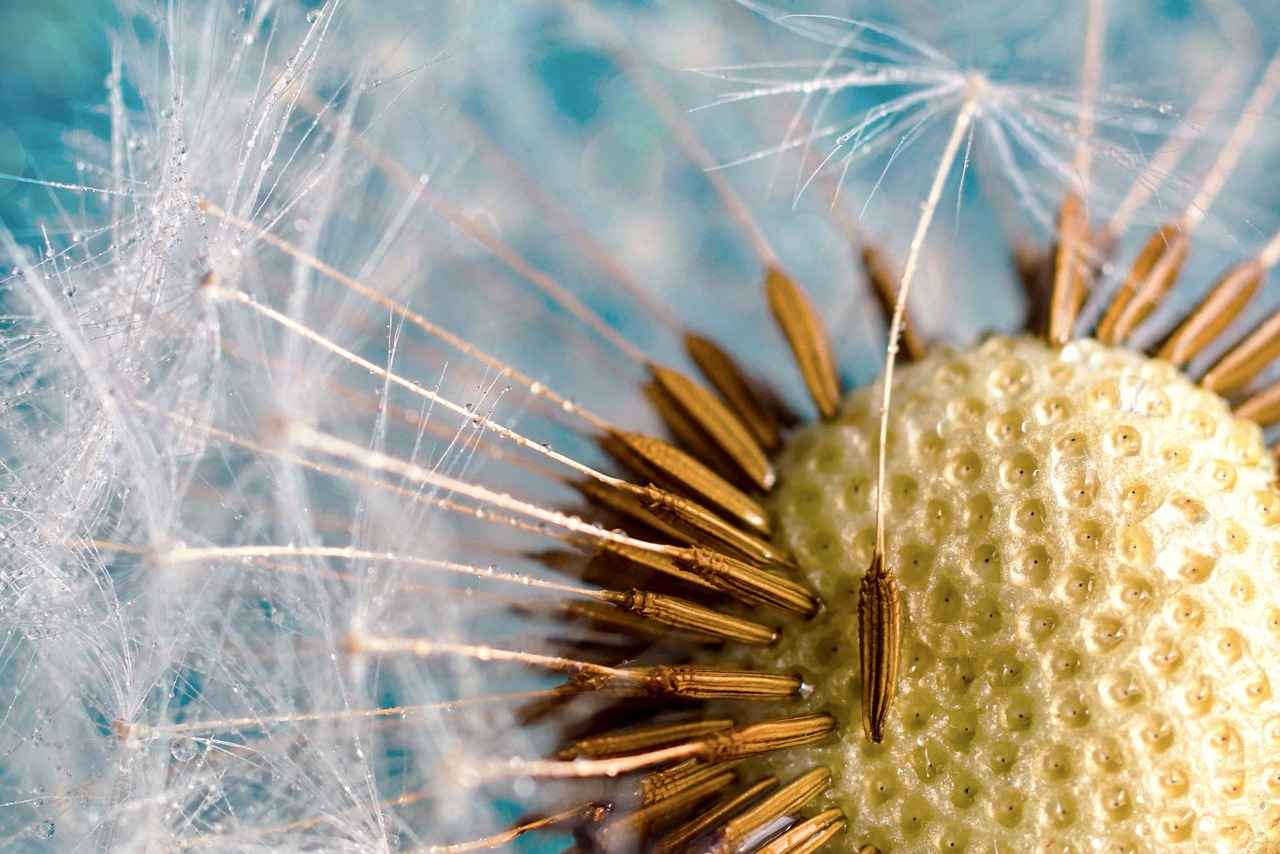
Common Mistakes to Avoid
Making chia seed pudding can be a delightful and nutritious experience, but it’s essential to be aware of common mistakes that can hinder your success. By understanding these pitfalls, you can ensure that your pudding turns out perfectly every time. Let’s dive into the most frequent errors and how to avoid them.
The ratio of chia seeds to liquid is crucial for achieving the right consistency in your pudding. A common mistake is using too much liquid, which results in a runny texture that lacks the desired creaminess. The ideal ratio is typically 1:4, meaning one part chia seeds to four parts liquid. This ratio allows the seeds to absorb the liquid properly, creating a thick and satisfying pudding.
Another frequent error is not allowing enough soaking time. Chia seeds need time to absorb the liquid and swell, which transforms them from tiny seeds into a pudding-like texture. For optimal results, aim for a soaking time of at least two hours, but overnight soaking is recommended for the best flavor and texture.
Many people forget to stir their chia seed pudding after mixing the ingredients. This step is vital because it ensures that the chia seeds are evenly distributed throughout the liquid. If you skip this, you may end up with clumps of seeds at the bottom of your container. After combining the ingredients, give it a good stir and then let it sit for a few minutes before stirring again to break up any clumps.
Another common mistake is using the wrong type of liquid. While most people opt for milk (dairy or non-dairy), it’s essential to consider the flavor and thickness of the liquid you choose. For example, using a thicker liquid like coconut milk will yield a richer pudding, while almond milk will create a lighter version. Experimenting with different liquids can lead to exciting flavor combinations!
Chia seed pudding can be quite bland if you don’t add any flavorings. Many people overlook this aspect and end up with a plain pudding. To enhance the taste, consider adding natural sweeteners such as honey, maple syrup, or agave nectar. You can also incorporate spices like cinnamon or vanilla extract to elevate the flavor profile.
After making your chia seed pudding, proper storage is key. Many people make the mistake of leaving it uncovered in the refrigerator, leading to a loss of freshness and flavor. Store your pudding in an airtight container to maintain its quality. It can last up to five days in the fridge, making it a convenient option for meal prep.
Lastly, some individuals don’t pay attention to the texture of their chia seed pudding. If it’s too thick, you can always add more liquid to achieve your desired consistency. On the other hand, if it’s too runny, you can let it sit longer to thicken up. Adjusting the texture is an essential part of the process, so don’t hesitate to experiment!
By avoiding these common mistakes, you can create a delicious and nutritious chia seed pudding that you’ll love. Remember to pay attention to the liquid ratio, allow for adequate soaking time, and enhance the flavor to make your pudding truly special.
Getting the Liquid Ratio Right
When it comes to preparing chia seed pudding, achieving the perfect texture is essential for a delightful eating experience. One of the most critical factors that influence the consistency of your pudding is the liquid-to-chia seed ratio. Understanding this ratio can make the difference between a creamy, indulgent treat and a runny, unappetizing mess.
What is the Ideal Liquid-to-Chia Seed Ratio?
For most recipes, a general guideline is to use 3 tablespoons of chia seeds for every 1 cup of liquid. This ratio allows the seeds to absorb the liquid adequately, resulting in a thick, pudding-like texture. However, personal preferences may vary, and experimenting with slight adjustments can help you find your perfect blend.
Why Too Much Liquid is a Problem
Using excessive liquid can lead to a runny consistency, which detracts from the overall enjoyment of the pudding. When chia seeds are submerged in too much liquid, they cannot absorb it effectively, resulting in a soupy mixture that lacks the desirable thickness. This can be particularly disappointing if you were hoping for a satisfying snack or breakfast option.
How to Adjust the Ratio
- Start Small: If you’re new to making chia seed pudding, begin with the standard ratio and adjust from there based on your texture preferences.
- Consider the Liquid Type: Different liquids (like almond milk, coconut milk, or dairy milk) may yield varying results. Some liquids are thicker than others, which can affect the final consistency.
- Mix Thoroughly: Ensure that the chia seeds are evenly distributed in the liquid. Stirring well after mixing will help prevent clumps and promote even absorption.
Tips for Perfecting Your Chia Seed Pudding
To enhance your chia seed pudding experience, consider the following:
- Soaking Time: Allow your pudding to sit for at least 2 hours or overnight. This soaking time is crucial for the seeds to expand and absorb the liquid fully.
- Adjust Sweetness: If you find the pudding is too runny, consider adding a bit more chia seeds or a natural thickener like mashed banana or nut butter to enhance the texture and taste.
- Experiment with Flavors: Adding spices such as cinnamon or vanilla extract can not only improve the flavor but also help mask any inconsistencies in texture.
By paying close attention to the liquid-to-chia seed ratio, you can create a delicious and satisfying chia seed pudding that is perfect for any time of the day. Remember, the key is to find a balance that works for your taste buds while ensuring that the pudding maintains a delightful, creamy texture.
Allowing Enough Soaking Time
When it comes to making the perfect chia seed pudding, one of the most critical aspects is the soaking time. Not allowing sufficient soaking time can lead to a gritty texture, which can be unappetizing and detract from the overall experience. To ensure a smooth and creamy pudding, it is essential to give the chia seeds adequate time to absorb the liquid. Aim for at least 2 hours of soaking time, although overnight is ideal for achieving the best results.
Chia seeds are unique in their ability to absorb liquid, expanding up to ten times their original size. This property is what makes them such a fantastic ingredient for pudding. However, if they are not soaked long enough, they will not fully hydrate, leaving you with a gritty and unpleasant texture.
- Choose the Right Liquid: Whether you opt for almond milk, coconut milk, or dairy milk, ensure that the liquid is well-mixed with the chia seeds.
- Mix Thoroughly: After adding chia seeds to the liquid, stir well to prevent clumping. This step is crucial for even hydration.
- Cover and Refrigerate: Once mixed, cover the container and place it in the refrigerator. This not only aids in hydration but also enhances the flavors as they meld together.
If you skip the soaking time or reduce it significantly, you may find that your chia pudding has a grainy texture that can be off-putting. The seeds will not have absorbed enough liquid to create that desired creamy consistency. Instead, you may experience a mouthful of crunchy seeds mixed with liquid, which is not the intended outcome.
| Soaking Time | Texture Quality |
|---|---|
| 30 minutes | Very gritty |
| 1 hour | Still somewhat gritty |
| 2 hours | Smooth, but not optimal |
| Overnight | Perfectly creamy |
While overnight soaking is recommended, there are ways to speed up the process without compromising quality:
- Use warm liquid to help the seeds absorb moisture faster.
- Increase the surface area by grinding the chia seeds slightly before soaking.
In summary, allowing enough soaking time is essential for making delicious chia seed pudding. By following these guidelines, you can create a pudding that is both nutritious and enjoyable, free from the gritty texture that can occur when chia seeds are improperly prepared.
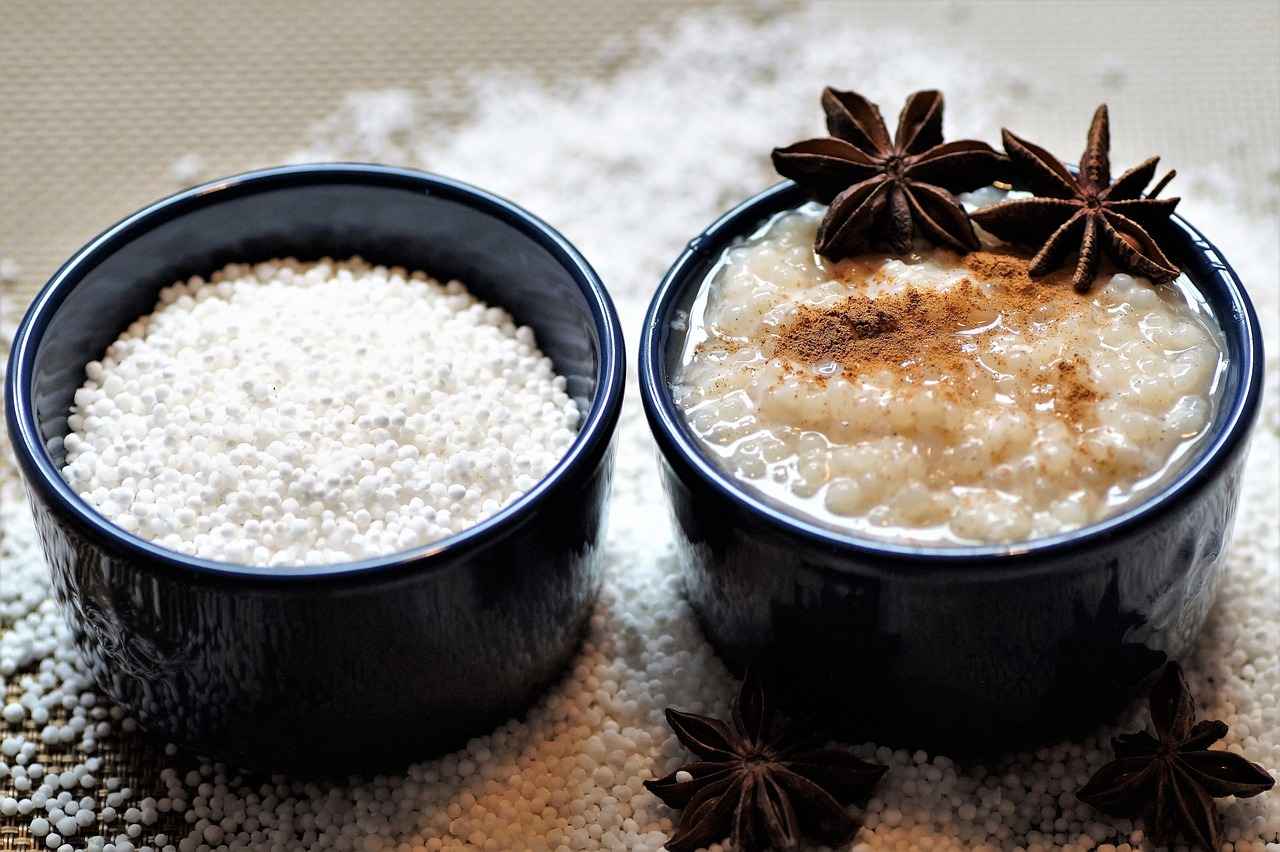
Storage Tips for Chia Seed Pudding
When it comes to enjoying your delicious chia seed pudding, knowing how to store it properly can significantly enhance its shelf life. Proper storage techniques not only help in preserving the taste and texture but also ensure that you can enjoy this nutritious treat throughout the week without compromising on quality.
Chia seed pudding is a versatile dish that can be made in advance, making it an ideal choice for busy individuals. However, improper storage can lead to spoilage, affecting both flavor and safety. By following the right storage guidelines, you can maintain the pudding’s freshness and nutritional benefits.
To keep your chia seed pudding fresh, it’s essential to store it in an airtight container. This prevents exposure to air and moisture, which can lead to spoilage. Here are some key points to consider:
- Ensure the container is clean and dry before use.
- Fill the container with pudding, leaving a little space at the top to allow for expansion.
- Label the container with the date it was made to keep track of freshness.
Chia seed pudding typically lasts for up to five days in the refrigerator. However, always check for any signs of spoilage, such as an off smell or changes in texture, before consuming.
If you want to prepare a larger batch of chia seed pudding, freezing is a viable option. This method can extend its shelf life for several weeks. Here’s how to do it effectively:
- Use freezer-safe containers or silicone molds to store your pudding.
- Leave some space in the container to allow for expansion as the pudding freezes.
- For easy portioning, consider freezing the pudding in individual servings.
Keep in mind that while freezing preserves the pudding, the texture may change slightly upon thawing. To thaw, simply transfer the container to the refrigerator and let it sit overnight.
To ensure the best quality of your chia seed pudding, consider the following tips:
- Use high-quality ingredients to start with, as this impacts the overall taste.
- Avoid adding fresh fruits directly into the pudding before storage, as they may spoil faster. Instead, add them just before serving.
- Stir the pudding well before serving, as the chia seeds may settle at the bottom during storage.
Even with proper storage, it’s crucial to be vigilant about the condition of your chia seed pudding. Here are some signs that indicate it may no longer be safe to eat:
- Off Smell: If the pudding emits a sour or unpleasant odor, it’s best to discard it.
- Change in Texture: A watery or overly gelatinous consistency can indicate spoilage.
- Mold Growth: Any visible mold is a clear sign that the pudding should not be consumed.
By following these storage tips, you can ensure that your chia seed pudding remains fresh and enjoyable for days. Proper storage not only enhances your culinary experience but also allows you to reap the numerous health benefits of this nutritious snack.
Refrigeration Guidelines
When it comes to enjoying your chia seed pudding, proper storage is essential to maintain its freshness and flavor. Following the right refrigeration guidelines will ensure that your pudding remains a delightful and nutritious option for days to come.
To keep your chia seed pudding fresh, always store it in an airtight container. This prevents air exposure, which can lead to spoilage and loss of flavor. Ensure that the container is clean and dry before adding your pudding. Glass jars with tight-fitting lids are an excellent choice as they do not retain odors and are easy to clean.
Chia seed pudding typically lasts for up to five days in the refrigerator when stored properly. After this period, you may notice changes in texture or taste. It’s essential to check for any signs of spoilage, such as an off smell or unusual texture, before consuming. If you notice any of these signs, it’s best to discard the pudding.
If you want to prepare larger batches, freezing is a viable option. However, it’s important to note that the texture may change once thawed. To freeze your chia seed pudding:
- Place it in a freezer-safe container, leaving some space at the top for expansion.
- Label the container with the date to keep track of how long it has been frozen.
- When ready to eat, thaw it in the refrigerator overnight before consuming.
Keep in mind that while freezing can extend the shelf life, the pudding may become slightly grainy after thawing. You can stir it well to improve the texture before serving.
To maximize the shelf life of your chia seed pudding, consider the following tips:
- Use Fresh Ingredients: Ensure that all ingredients, especially the milk or milk alternatives, are fresh before mixing.
- Avoid Cross-Contamination: Always use clean utensils when serving to prevent bacteria from entering the container.
- Keep It Covered: When not in use, keep the pudding covered to protect it from absorbing odors from other foods in the fridge.
If you have leftover chia seed pudding that you won’t consume within five days, consider repurposing it. You can:
- Mix it into smoothies for added texture and nutrients.
- Use it as a topping for oatmeal or yogurt.
- Incorporate it into baked goods like muffins or pancakes for a nutritious boost.
By following these refrigeration guidelines, you can enjoy your chia seed pudding at its best, ensuring that each bite is as delicious and nutritious as the first. With proper storage and care, your pudding can be a reliable go-to snack or breakfast option throughout the week.
Freezing Options
When it comes to preparing chia seed pudding, the convenience of making larger batches can be a game changer. One effective method to achieve this is by freezing your pudding. This allows you to enjoy this nutritious snack on demand, but it’s essential to understand the implications of freezing on texture and flavor.
Freezing can be a practical solution for busy individuals or families who wish to meal prep their snacks. By making a larger batch, you can save time and ensure that healthy options are readily available. However, it’s important to note that while freezing extends the shelf life of your pudding, it may alter the texture upon thawing.
When chia seed pudding is frozen, the water content within the mixture forms ice crystals. Once thawed, these ice crystals can disrupt the creamy consistency, leading to a grainy or watery texture. If you prefer a smooth pudding, consider the following tips:
- Blend Before Freezing: Before freezing, blend the pudding to achieve a uniform texture. This can help minimize the impact of ice crystals.
- Use Airtight Containers: Store your pudding in airtight containers to prevent freezer burn, which can further affect texture.
- Portion Control: Freeze in smaller portions to make it easier to thaw only what you need, maintaining the quality of the remaining pudding.
Thawing your chia seed pudding properly is crucial to restoring its taste and texture. Here are some effective methods:
- Refrigerator Method: Transfer the frozen pudding to the refrigerator and allow it to thaw overnight. This gradual process helps maintain its consistency.
- Quick Thaw: If you’re in a hurry, you can place the container in a bowl of warm water for a quicker thaw, but be cautious not to overheat it.
Refreezing chia seed pudding is generally not recommended. Each freeze-thaw cycle can further degrade the texture and flavor, making it less enjoyable. Instead, it’s best to only thaw what you plan to consume.
To ensure the best results when freezing your chia seed pudding, follow these best practices:
- Cool Before Freezing: Allow your pudding to cool to room temperature before placing it in the freezer. This helps reduce condensation and ice crystal formation.
- Label Containers: Always label your containers with the date of freezing. Chia seed pudding can be stored in the freezer for up to three months.
- Experiment with Ingredients: Consider using ingredients that freeze well, such as almond milk or coconut milk, to enhance the overall texture after thawing.
In conclusion, freezing chia seed pudding is a viable option for those looking to prepare larger batches. While the texture may change upon thawing, following these tips can help maintain a satisfying and nutritious snack. Enjoy your chia seed pudding any time by utilizing these freezing options!
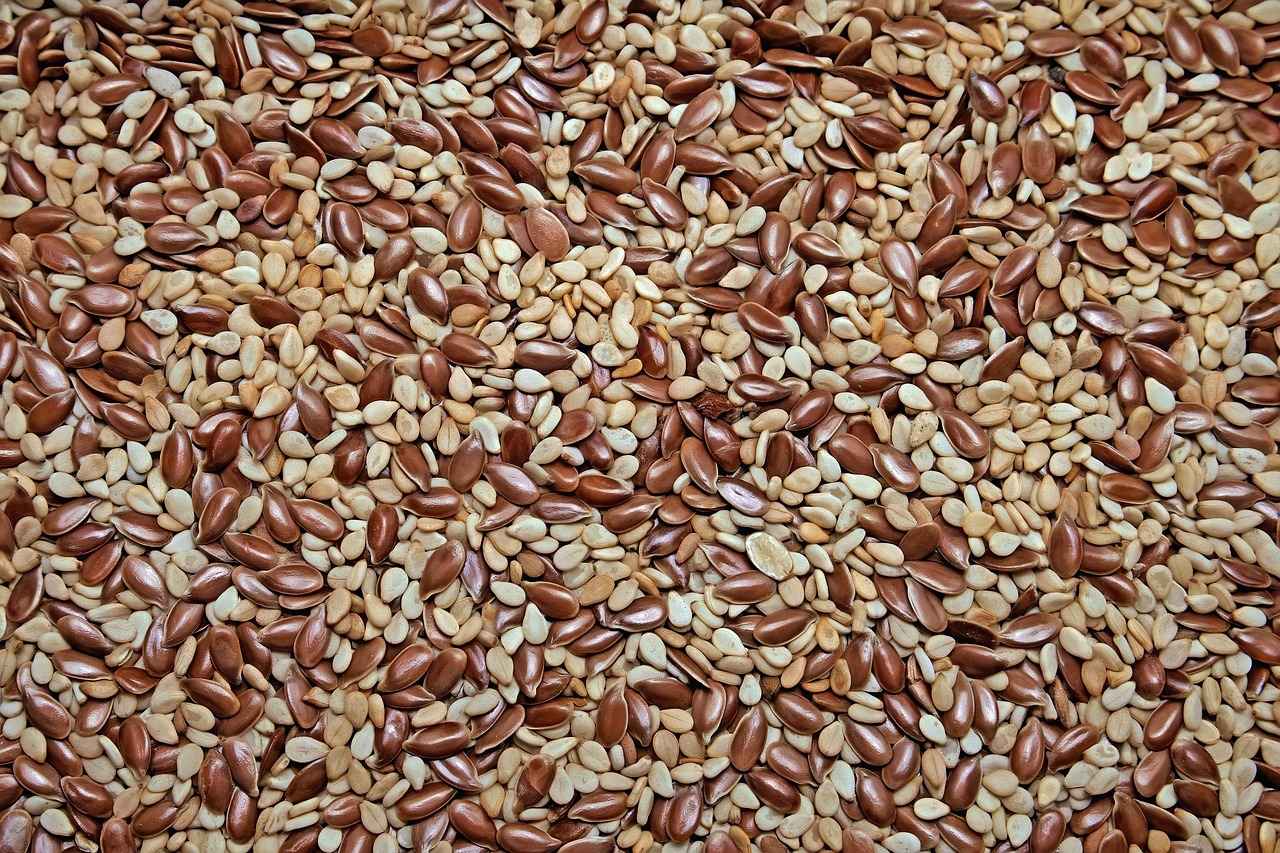
Health Benefits of Chia Seed Pudding
Chia seed pudding has rapidly become a favorite among health enthusiasts and food lovers alike. This delightful dish not only satisfies your taste buds but also serves as a powerhouse of nutrition. Let’s delve into the health benefits of chia seed pudding, exploring how it can enhance your overall well-being.
Chia seeds are small but mighty. They are loaded with essential nutrients such as fiber, protein, and omega-3 fatty acids. These tiny seeds can absorb up to 10-12 times their weight in water, forming a gel-like consistency that is perfect for puddings. This unique property not only enhances the texture but also contributes to the numerous health benefits associated with chia seed pudding.
The high fiber content in chia seeds plays a crucial role in promoting digestive health. Fiber is essential for maintaining regular bowel movements and preventing constipation. Incorporating chia seed pudding into your diet can help you achieve your daily fiber intake, supporting a healthy gut and improving overall digestion.
Yes! Chia seeds are an excellent source of omega-3 fatty acids, which are known for their heart-protective properties. These healthy fats help reduce inflammation, lower cholesterol levels, and support overall cardiovascular health. By including chia seed pudding in your diet, you can contribute to a healthier heart.
Absolutely! The combination of fiber and protein in chia seeds can help you feel fuller for longer. This satiety can prevent overeating and assist in weight management. Chia seed pudding makes for a nutritious snack or breakfast option that can keep your hunger at bay, making it easier to stick to your dietary goals.
- Antioxidants: Chia seeds are rich in antioxidants, which help combat oxidative stress and reduce the risk of chronic diseases.
- Minerals: They provide essential minerals such as calcium, magnesium, and phosphorus, which are vital for bone health.
- Protein: Chia seeds are a great plant-based protein source, making them ideal for vegetarians and vegans.
Incorporating chia seed pudding into your diet is easy and versatile. You can enjoy it as a breakfast, a snack, or even a dessert. Customize your pudding with various toppings such as fresh fruits, nuts, or a drizzle of honey for added flavor. The possibilities are endless!
While chia seeds are generally safe for most people, it’s essential to consume them in moderation. Due to their high fiber content, excessive intake may lead to digestive discomfort. Always drink plenty of water when consuming chia seeds to aid digestion.
In conclusion, chia seed pudding is not only a delicious treat but also a nutritional powerhouse. With its numerous health benefits, including aiding digestion, promoting heart health, and supporting weight management, it’s a fantastic addition to any diet. Start experimenting with chia seed pudding today and enjoy the myriad of health benefits it has to offer!
High Fiber Content
Chia seeds have emerged as a superfood, renowned for their impressive nutritional profile. Among their many benefits, the high fiber content stands out, playing a pivotal role in digestive health and weight management. In this section, we will delve into the significance of fiber in chia seeds and how it contributes to overall well-being.
Chia seeds are composed of approximately 34% fiber, making them one of the richest sources of dietary fiber available. This high fiber content is primarily soluble fiber, which absorbs water and forms a gel-like substance in the stomach. This unique property is what makes chia seeds particularly beneficial for digestion.
Fiber plays a crucial role in maintaining a healthy digestive system. It promotes regular bowel movements by adding bulk to the stool and facilitating its passage through the intestines. By consuming chia seeds, you can help prevent constipation and promote a healthy gut environment. Furthermore, the gel-like consistency created by soluble fiber can also aid in slowing down digestion, which can be beneficial for individuals with digestive disorders.
One of the most significant benefits of high fiber foods like chia seeds is their ability to promote a feeling of satisfaction. When chia seeds absorb liquid, they expand and create a sense of fullness in the stomach. This can help reduce overall calorie intake, making chia seeds a fantastic option for those looking to manage their weight. By incorporating chia seeds into meals or snacks, you can curb cravings and maintain energy levels throughout the day.
Incorporating chia seeds into your diet can be a strategic move for weight management. The fiber content not only aids digestion but also helps regulate blood sugar levels. This stabilization can prevent sudden spikes and crashes in energy, reducing the likelihood of unhealthy snacking. Studies suggest that diets rich in fiber can lead to a lower body weight and decreased risk of obesity.
- Chia Seed Pudding: Mix chia seeds with your choice of milk or yogurt and let them soak overnight for a nutritious breakfast.
- Smoothies: Add a tablespoon of chia seeds to your favorite smoothie for an extra fiber boost.
- Baking: Substitute chia seeds for a portion of flour in baking recipes to enhance fiber content.
In summary, the high fiber content in chia seeds offers significant benefits for digestion and weight control. By incorporating chia seeds into your diet, you can enjoy a range of health benefits while satisfying your hunger. Whether you choose to enjoy them in puddings, smoothies, or baked goods, chia seeds are a versatile and nutritious addition to any meal.
Rich in Omega-3 Fatty Acids
When it comes to nutritional powerhouses, chia seeds stand out as an exceptional source of essential nutrients. Among their many health benefits, they are particularly renowned for being one of the best plant-based sources of omega-3 fatty acids. These fatty acids play a crucial role in maintaining overall health, particularly for the heart and brain.
Omega-3 fatty acids are a type of polyunsaturated fat that is vital for numerous bodily functions. Unlike saturated fats, omega-3s are considered healthy fats that contribute to cardiovascular health, cognitive function, and inflammation reduction. They are classified into three main types: ALA (alpha-linolenic acid), EPA (eicosapentaenoic acid), and DHA (docosahexaenoic acid). Chia seeds are a rich source of ALA, which is particularly beneficial for those following a plant-based diet.
- Heart Health: Omega-3 fatty acids help lower triglyceride levels, reduce blood pressure, and prevent the formation of arterial plaques, contributing to a healthier heart.
- Brain Function: These fatty acids are essential for brain health, supporting cognitive functions such as memory and learning.
- Inflammation Reduction: Omega-3s have anti-inflammatory properties that can help alleviate symptoms of chronic conditions like arthritis.
- Mood Regulation: Some studies suggest that omega-3s can help reduce symptoms of depression and anxiety.
Chia seeds are an excellent plant-based source of omega-3 fatty acids, particularly ALA. Just one ounce (about 28 grams) of chia seeds contains approximately 5 grams of ALA. This makes them an ideal addition to a variety of diets, especially for those who do not consume fish or other seafood, which are typically high in EPA and DHA.
Adding chia seeds to your meals is easy and versatile. Here are some practical ways to include them in your diet:
- Smoothies: Blend chia seeds into your favorite smoothies for a nutrient boost.
- Baking: Incorporate chia seeds into baked goods like muffins, breads, and pancakes.
- Salads: Sprinkle chia seeds over salads for added crunch and nutrition.
- Chia Pudding: As mentioned earlier, chia seed pudding is a delicious way to enjoy the health benefits of chia seeds.
While chia seeds offer numerous health benefits, it is important to consume them in moderation. Overconsumption can lead to digestive issues due to their high fiber content. It is advisable to start with small amounts and gradually increase your intake. Additionally, individuals with certain medical conditions or those taking specific medications should consult with a healthcare provider before significantly increasing their omega-3 intake.
In summary, chia seeds are not only a versatile ingredient but also a potent source of omega-3 fatty acids, essential for maintaining heart and brain health. By incorporating chia seeds into your diet, you can reap the numerous health benefits they offer while enjoying their unique texture and flavor.
Frequently Asked Questions
- How long does chia seed pudding need to soak?
Chia seed pudding should ideally soak for at least 2 hours, but for the best texture and flavor, it’s recommended to leave it overnight. This allows the seeds to fully absorb the liquid and expand.
- Can I use any type of milk for chia seed pudding?
Absolutely! You can use any type of milk, whether it’s dairy, almond, coconut, or oat milk. Each type will give your pudding a unique flavor and texture, so feel free to experiment!
- Is chia seed pudding healthy?
Yes! Chia seed pudding is packed with nutrients. It’s rich in fiber, protein, and omega-3 fatty acids, making it a fantastic choice for a healthy snack or breakfast. Plus, it can help with digestion and keeping you full.
- How can I flavor my chia seed pudding?
You can enhance your chia seed pudding by adding fresh fruits, spices, or flavor extracts. Popular choices include berries, bananas, vanilla extract, or even a sprinkle of cinnamon for an extra kick!
- How long can I store chia seed pudding?
Chia seed pudding can be stored in an airtight container in the refrigerator for up to five days. If you want to make a larger batch, you can freeze it, but keep in mind the texture may change once thawed.
